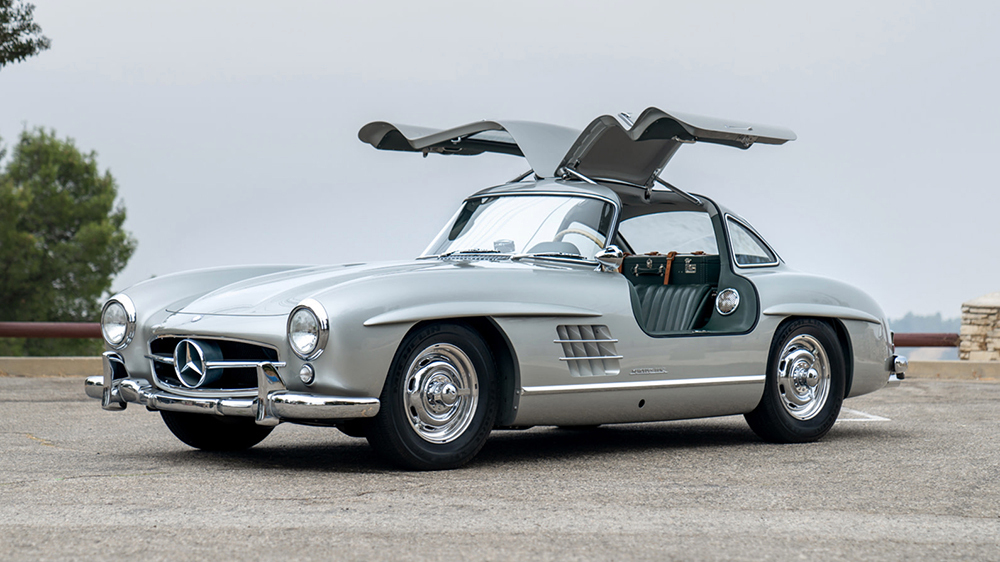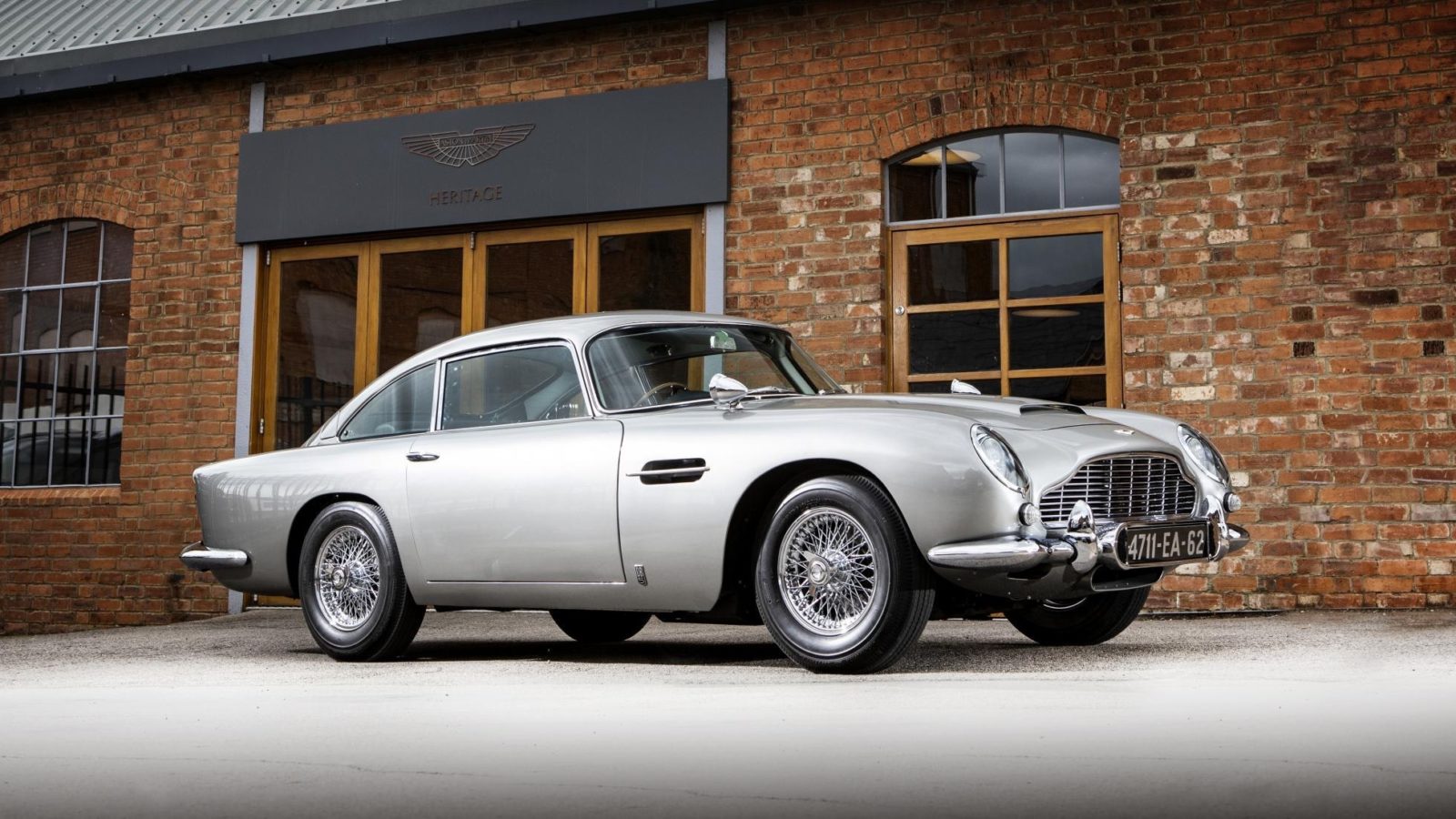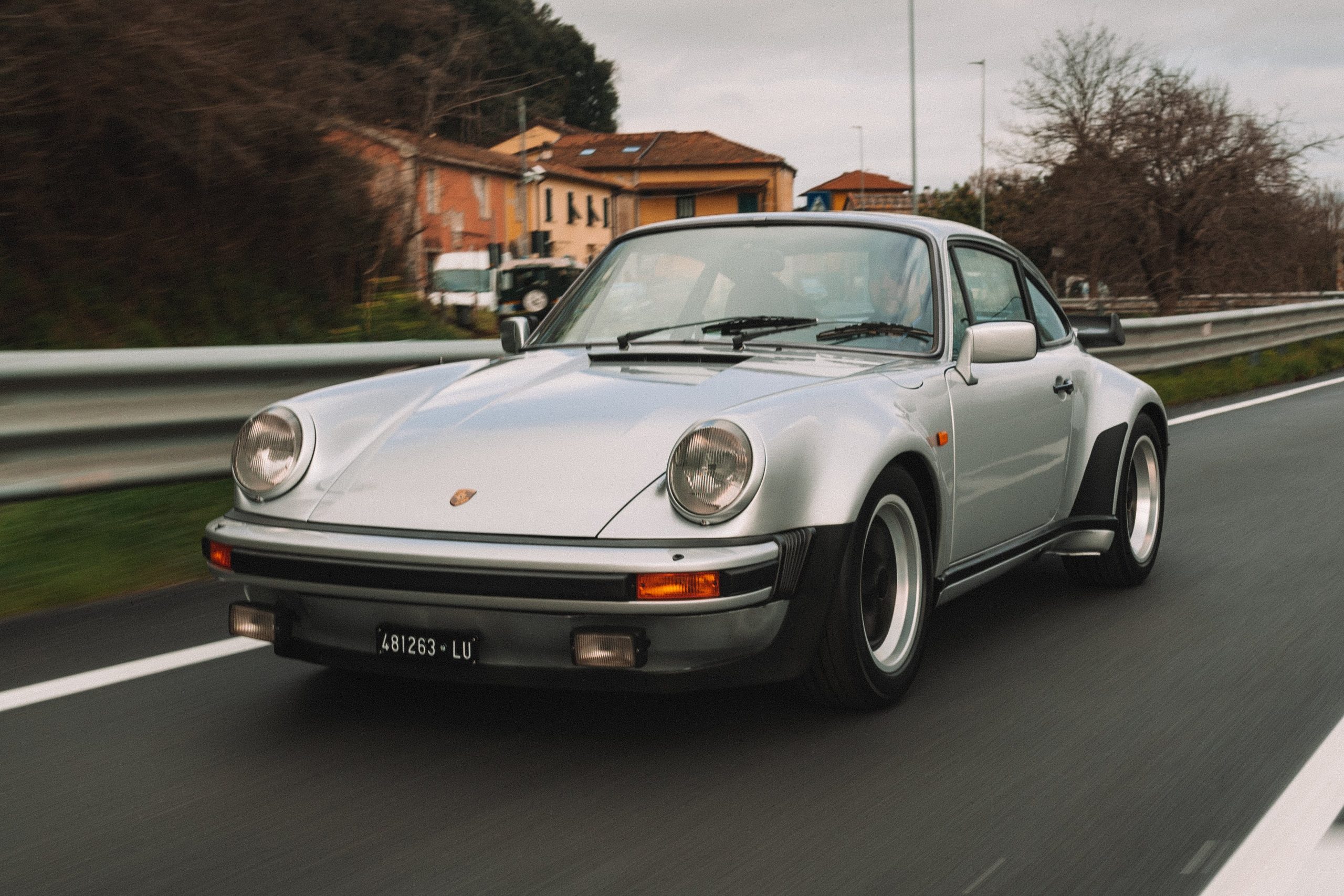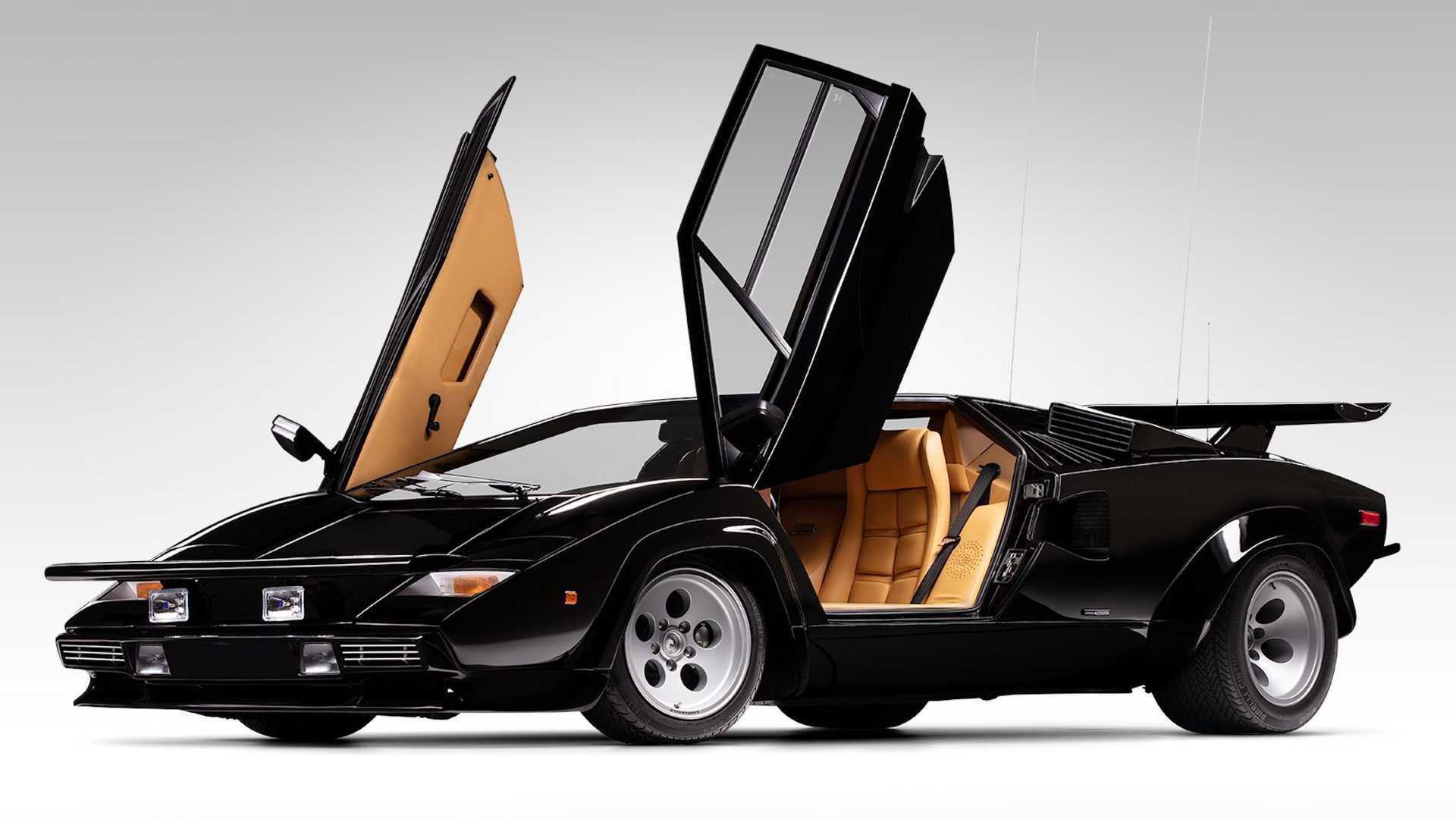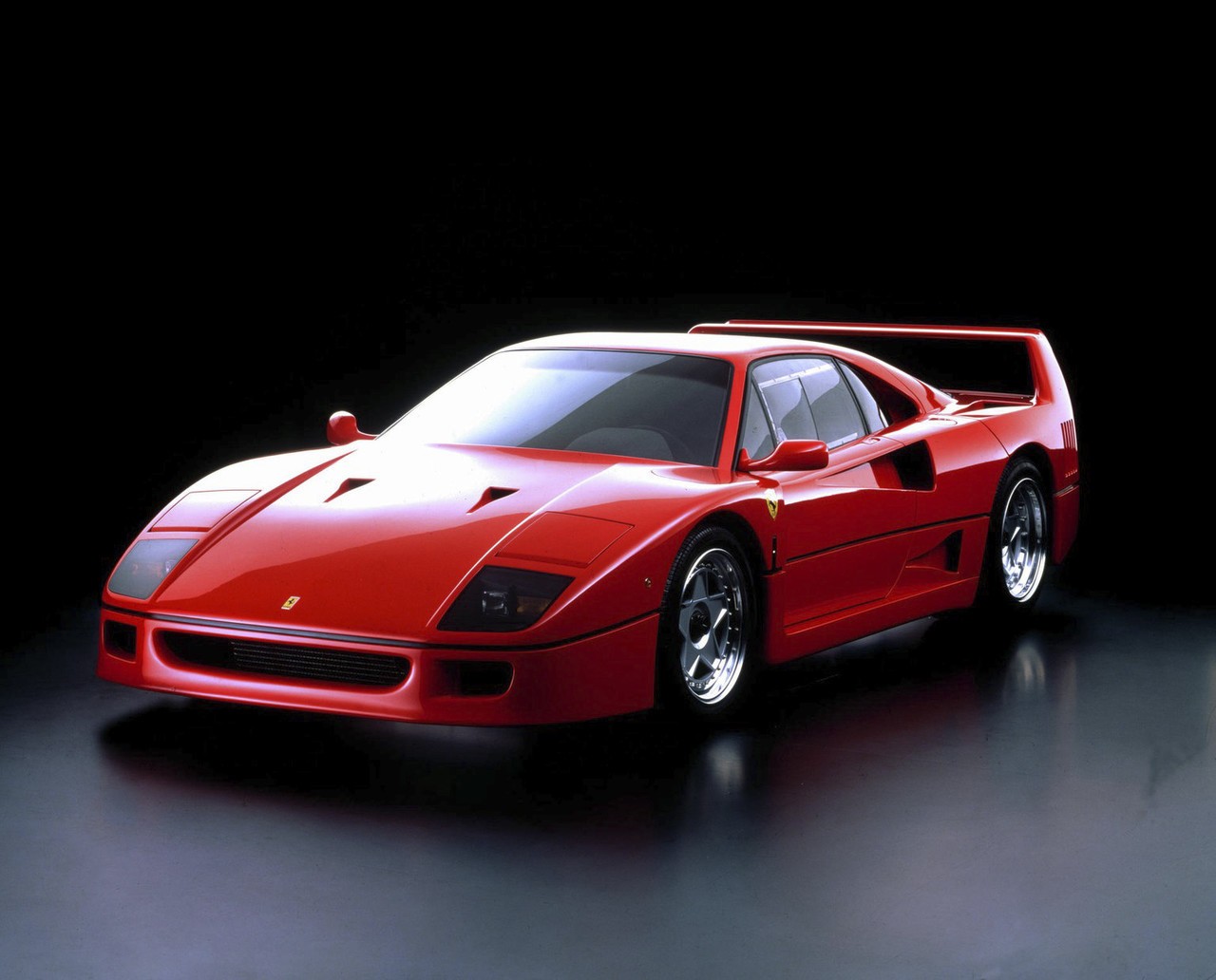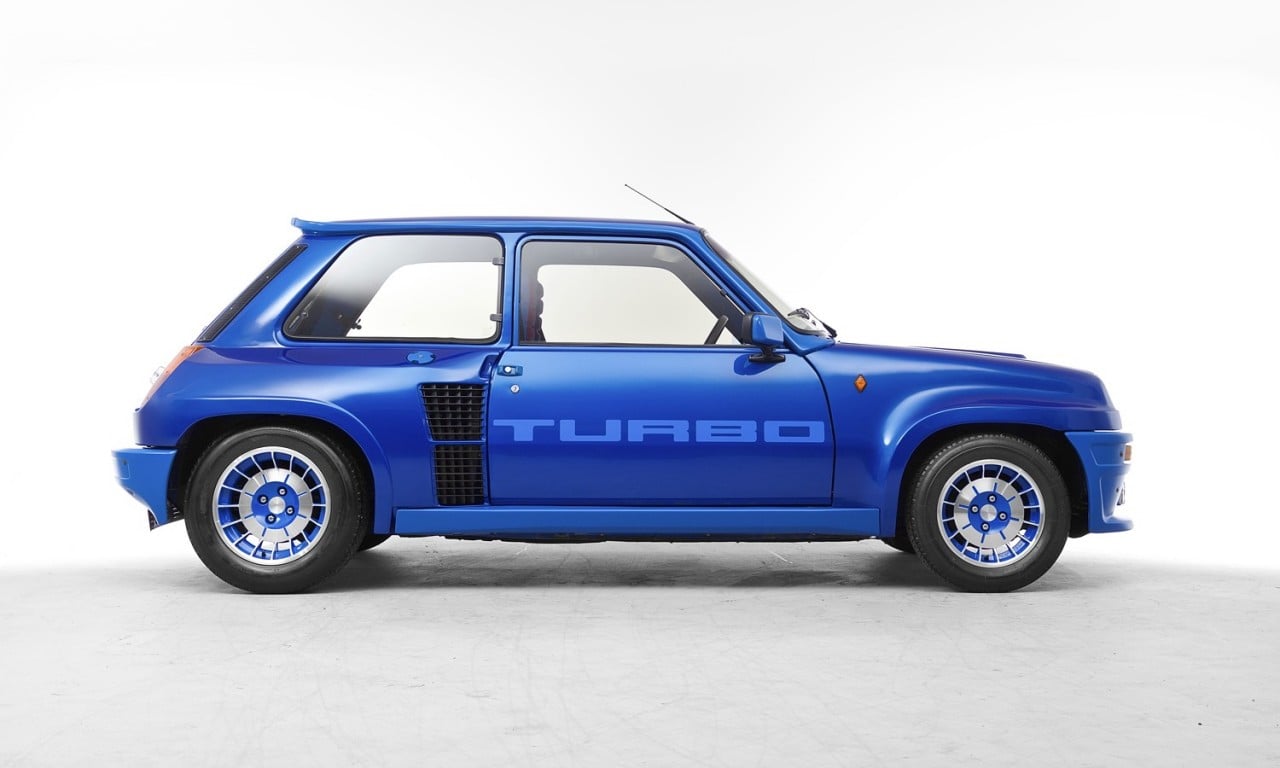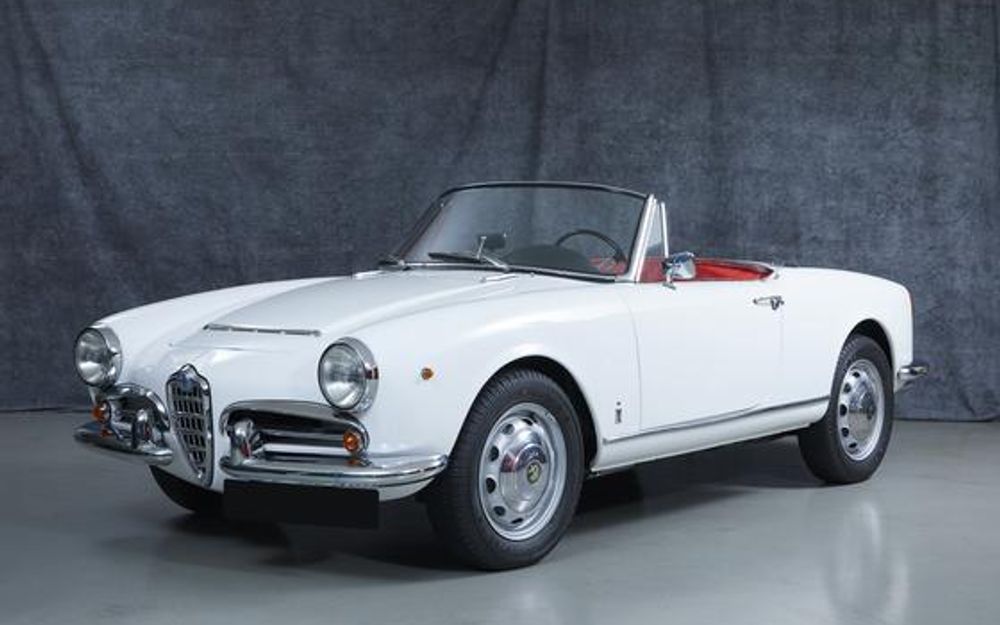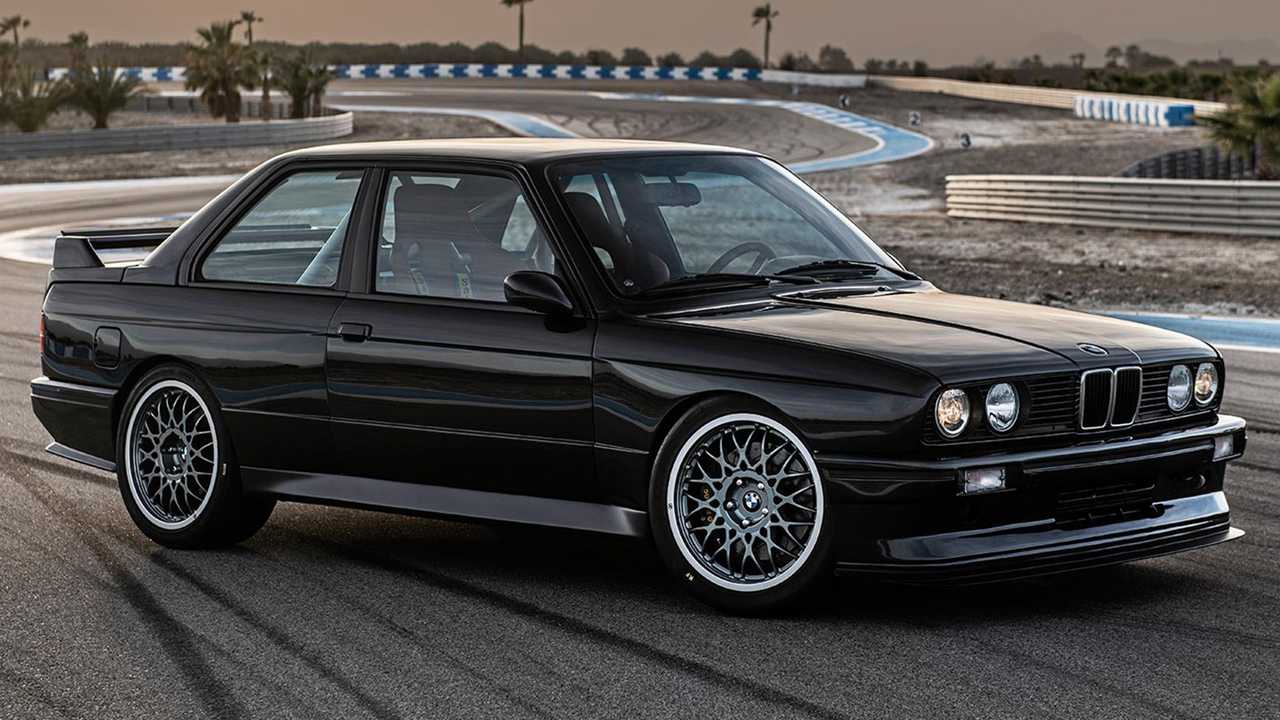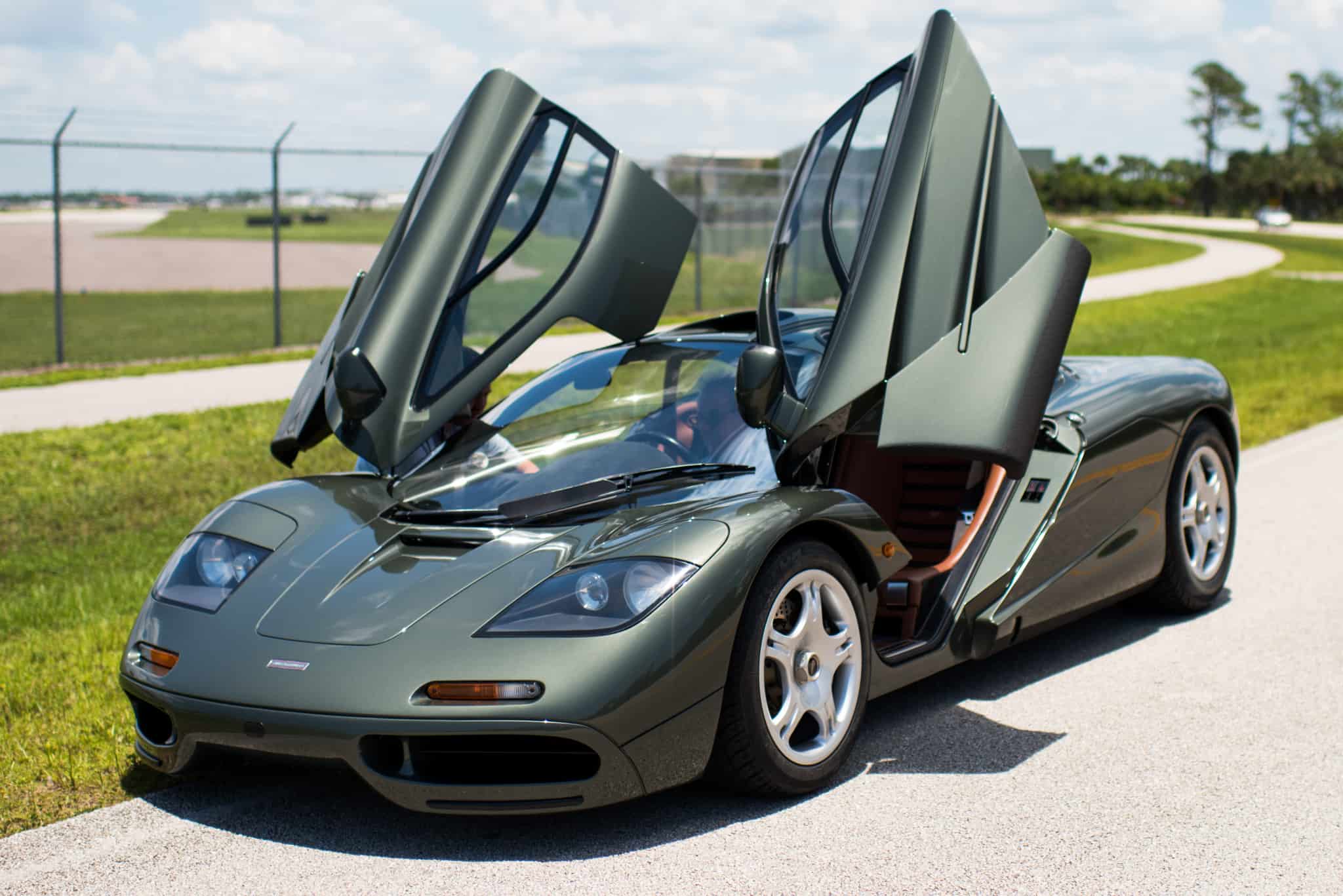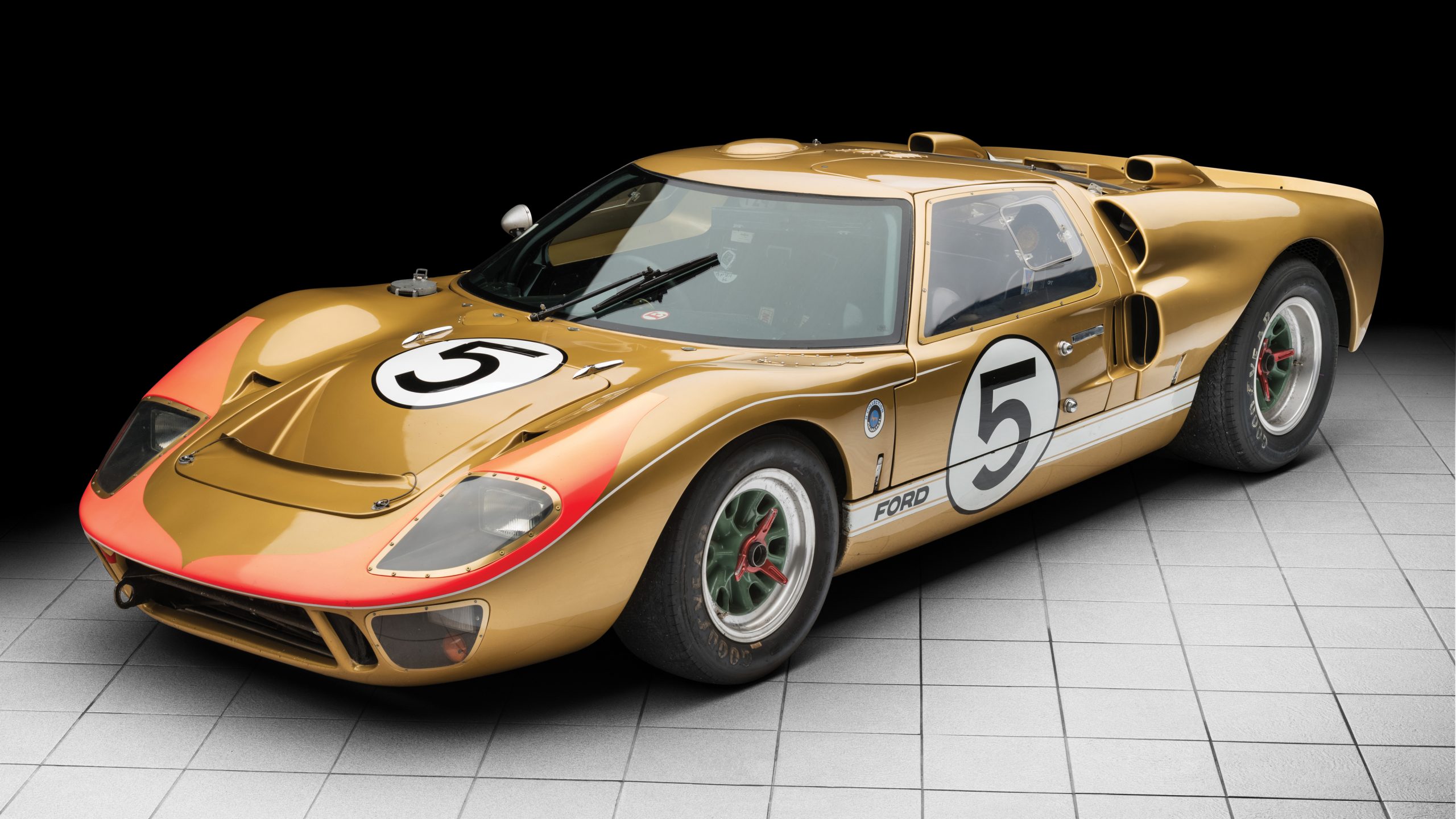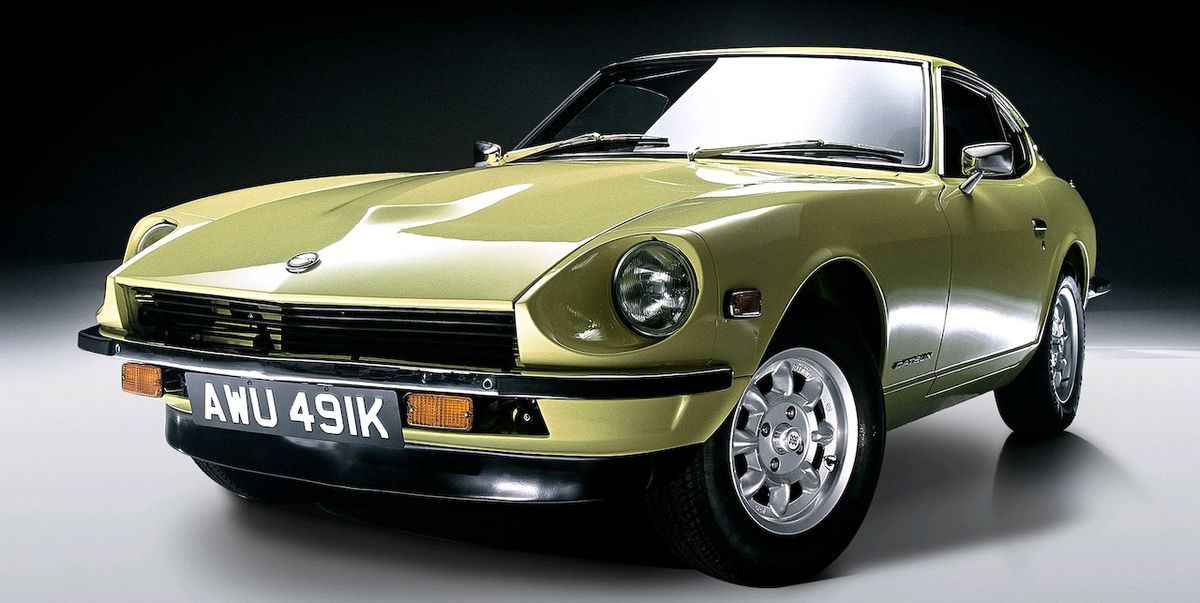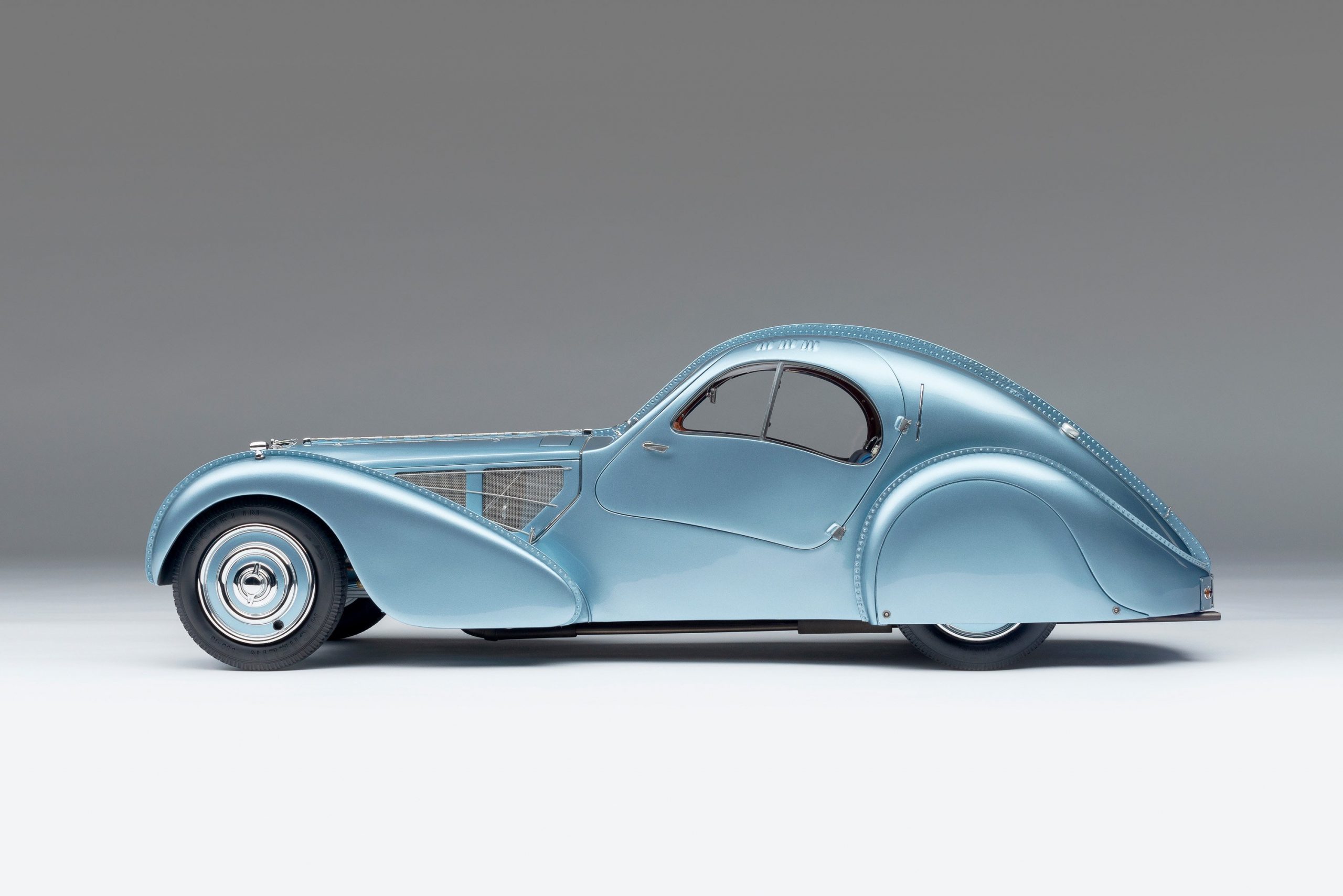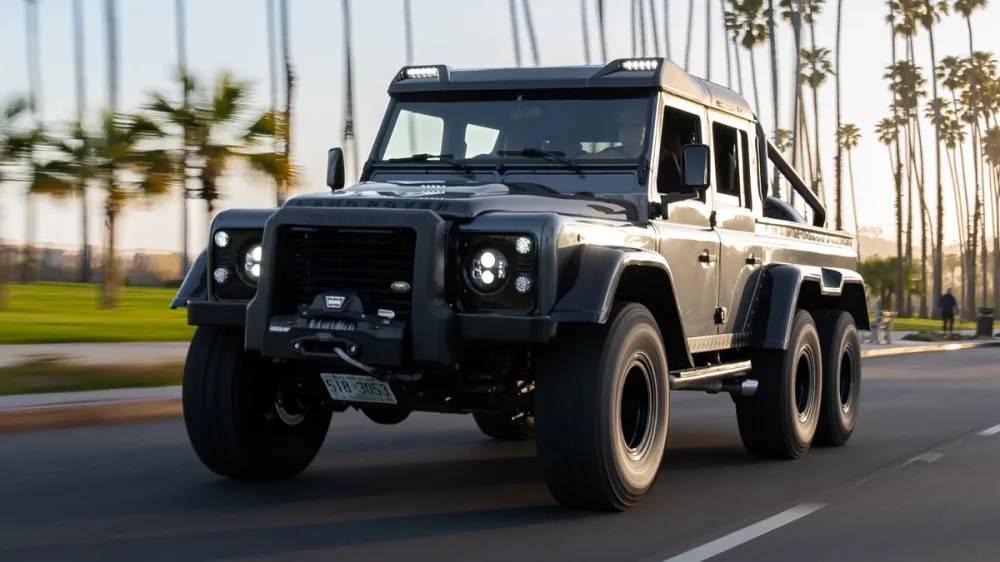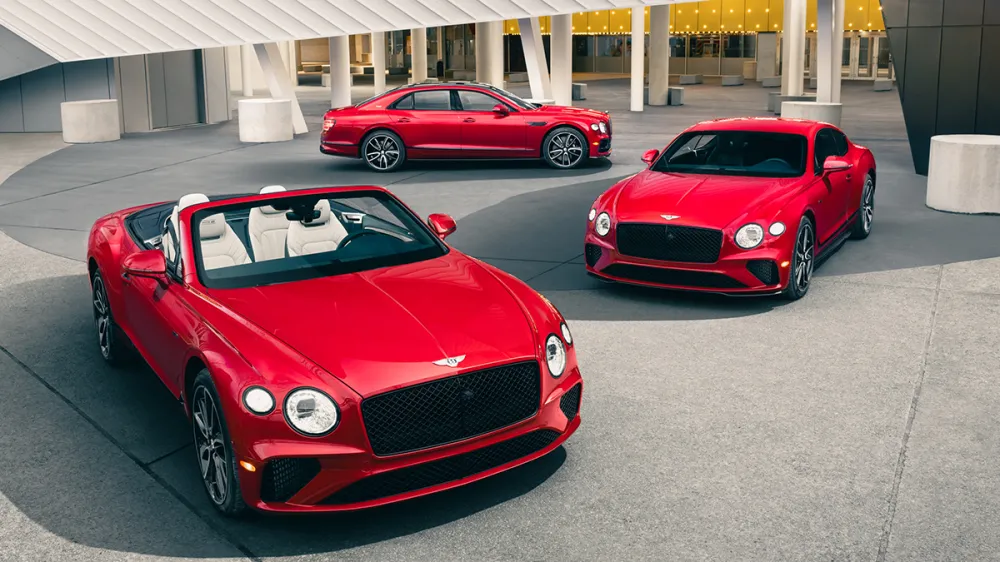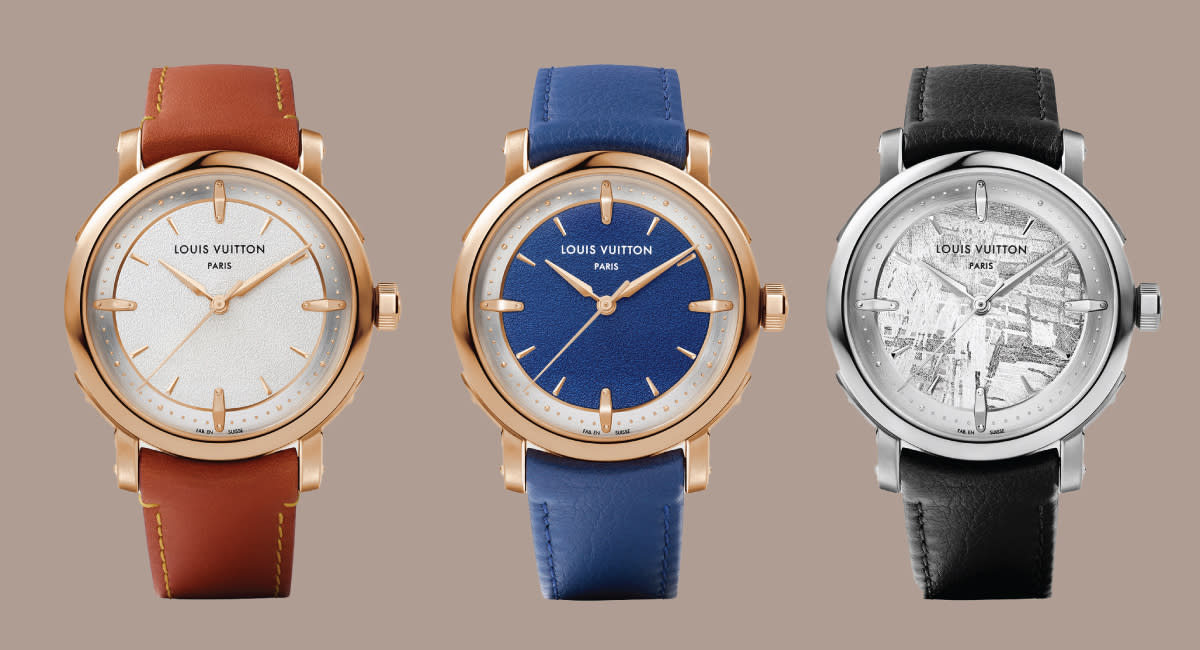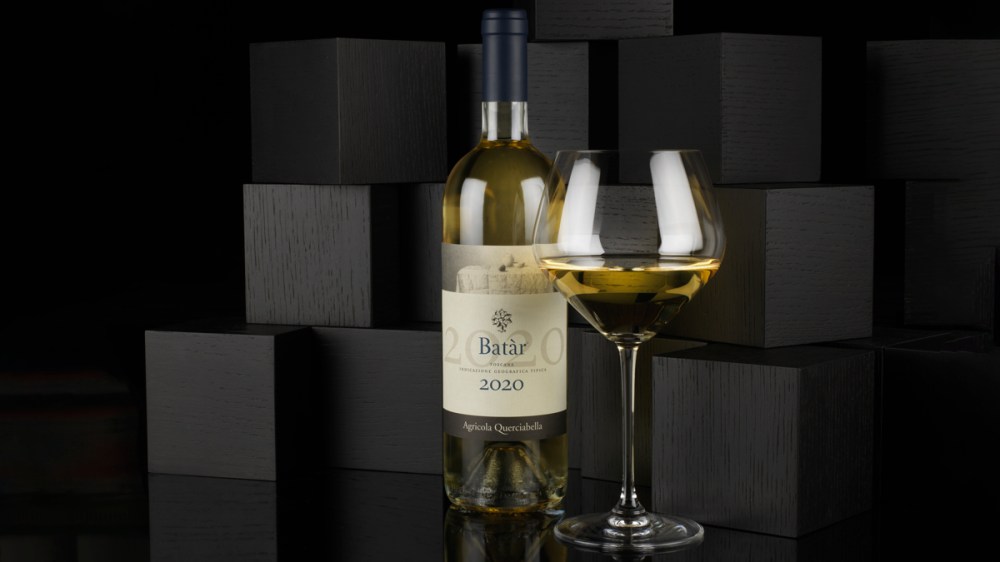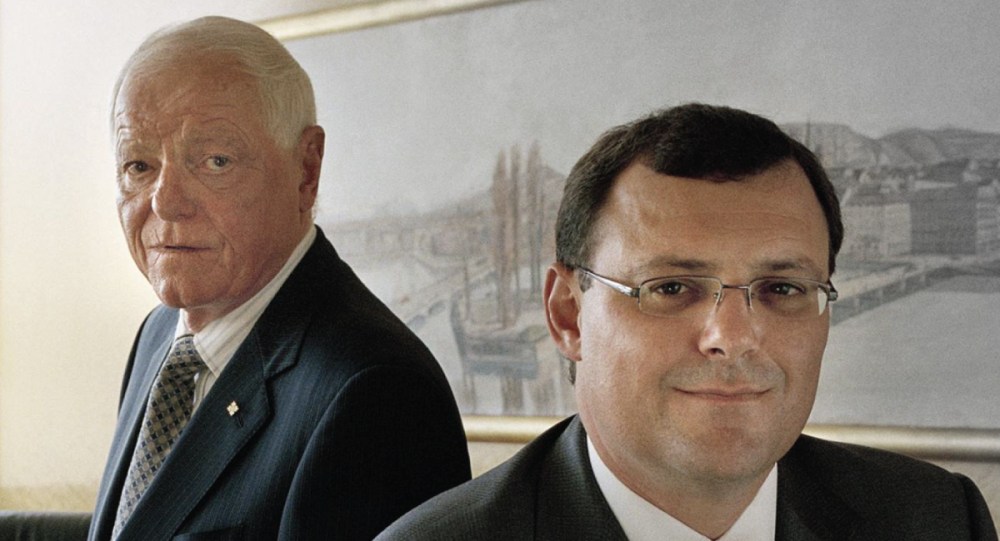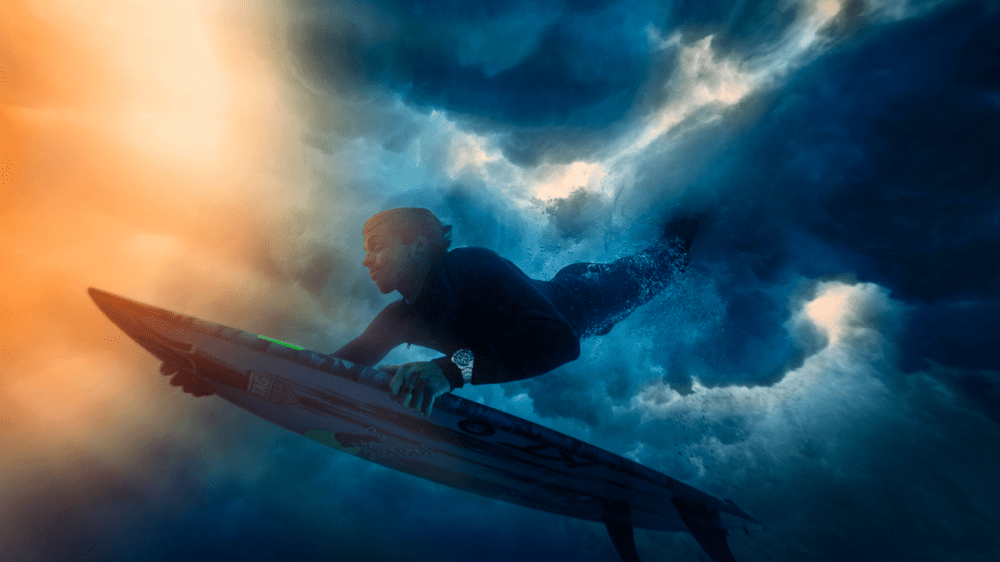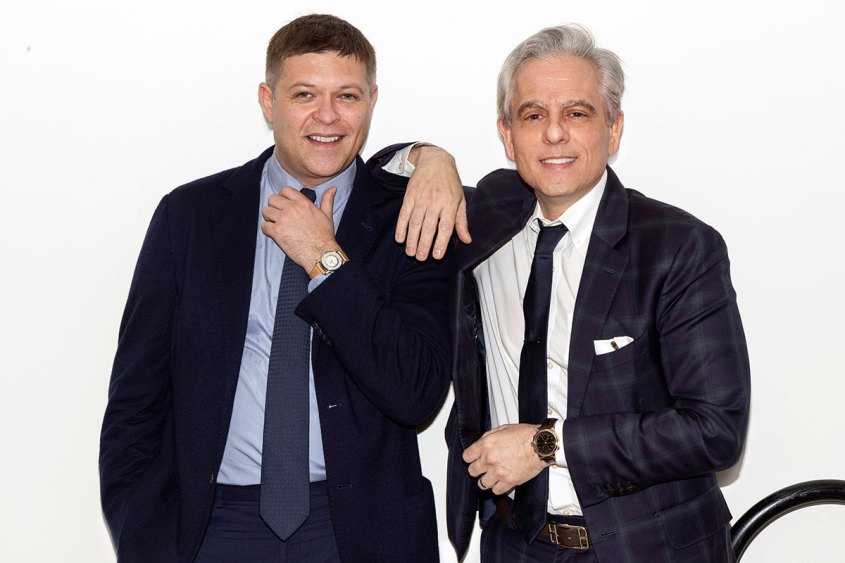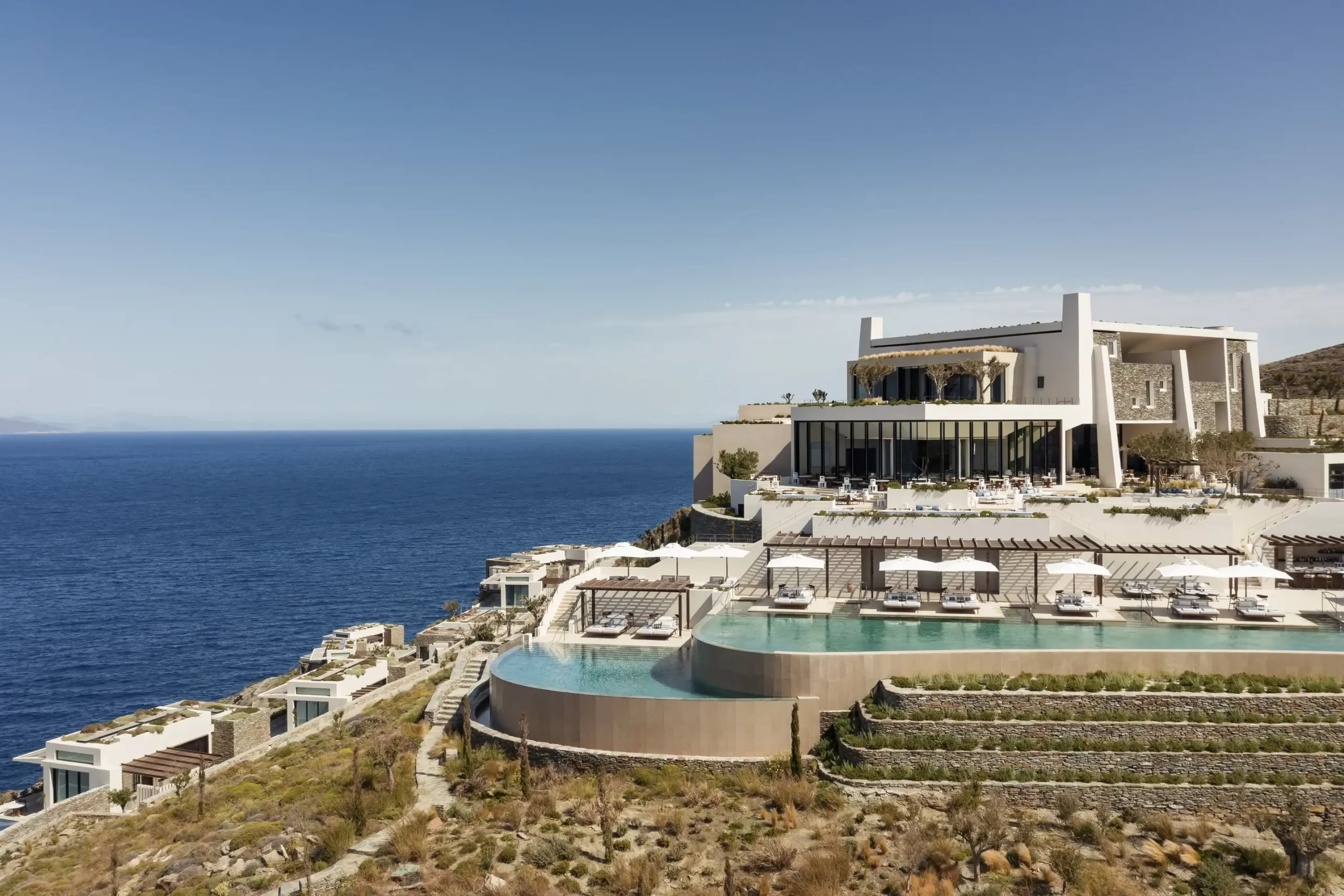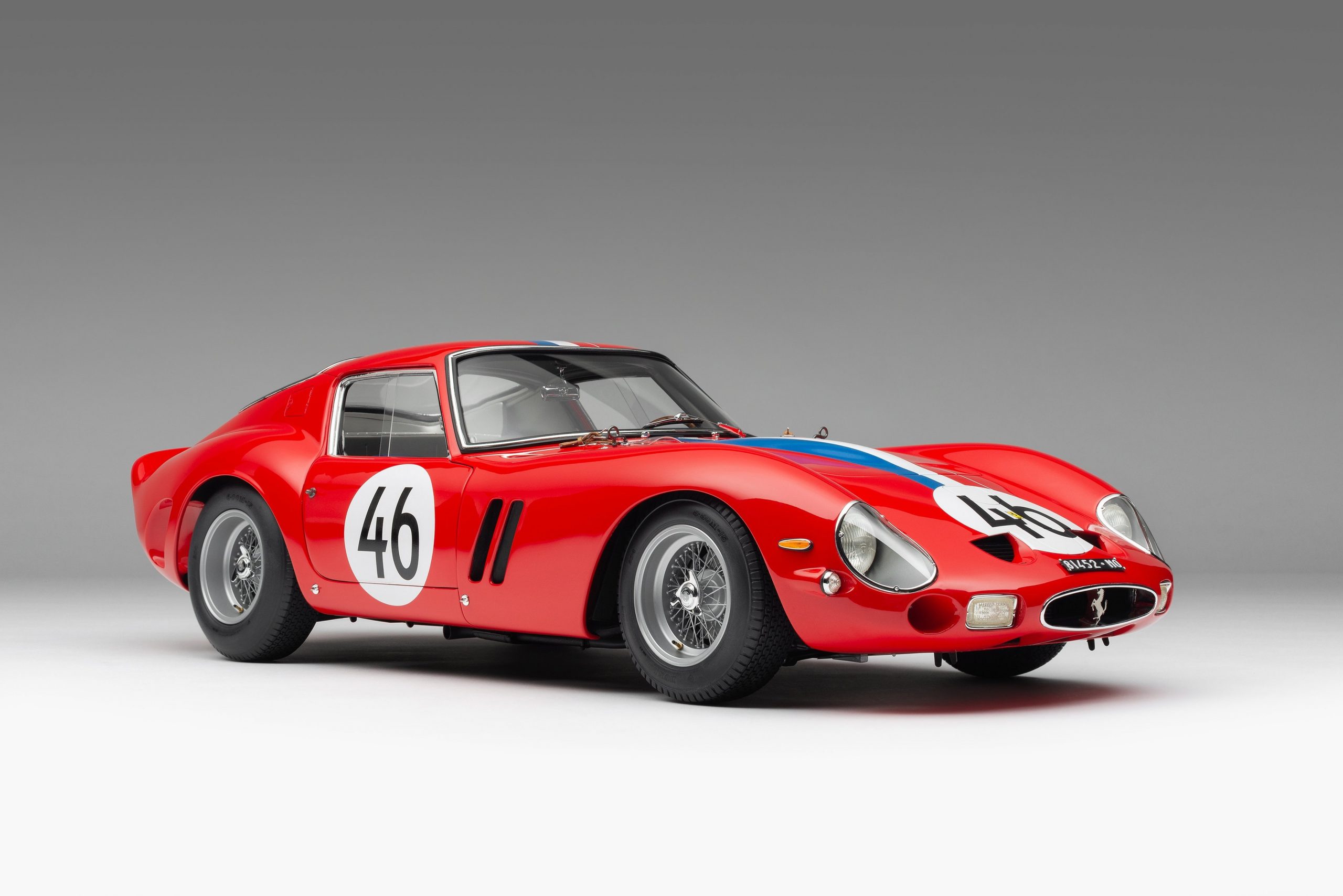
The 14 Most Iconic Classic Cars
Robb Report’s definitive guide to the most important cars of the 20th century.
Related articles
Reducing all the world’s great cars to a list of just 14 is a somewhat thankless task, and is sure to upset a few (many). However, when curating this heady list of vehicles below we’ve taken into account not only collectability, design, racing heritage and cultural impact. These are the cars that remain icons in an industry filled with watershed moments.
Here, in no particular order, Robb Report’s 14 most iconic classic cars.
Mercedes-Benz 300SL Coupe
The 300SL needs little introduction. From 1954-57 the coupe turned the motoring world on its head.
Its ultra-light, tubular design and gullwing doors were standout features, however, it was the ground-breaking engine – a 3-litre overhead camshaft straight-6 engine – that really captured the imagination.
Capable of 179kW and 294Nm of torque, the engine catapulted the 1500kg car to a top speed of 263km/h, making it the fastest production car of its time.
Aston Martin DB5
Crossing the cultural zeitgeist, the Aston Martin DB5 is the most recognisable motorcar produced by the marque thanks to its starring role in the James Bond film, Goldfinger.
Championing many of the attributes of its predecessor – the equally handsome DB4 – the DB5 saw an enlarged, all-aluminium engine attached to a five-speed transmission that produced 210kW and propelled the car to 233km/h. A spritely figure.
From 1963 to 1965 only 1059 units of the DB5 were ever produced and today it remains a coveted piece of English motoring history thanks to its performance, good-looks and bona fide star power.
Ferrari 250 GTO
Produced from 1962 to 1964, the Ferrari 250 GTO has become the holy grail for Prancing Horse fans. Powered by Ferrari’s Tipo 168.62 Colombo V12 engine, the GTO offered 250cc’s of displacement resulting in 221kW and 294nm of torque.
The formidable grunt was paired with a smooth, aerodynamic design, which promised speed and stability. Now, the aluminium bodywork is instantly recognisable thanks to its long, low nose, and distinctive air intakes.
It was enough to see Ferrari win the over 2000cc class of FIA’s International Championship for GT Manufacturers in 1962, 1963 and 1964. With thanks to its curved lines and racing heritage the GTO is now arguably the most coveted collector car in the world – with a 250 GTO selling for US$70 million in 2018.
Jaguar E-Type
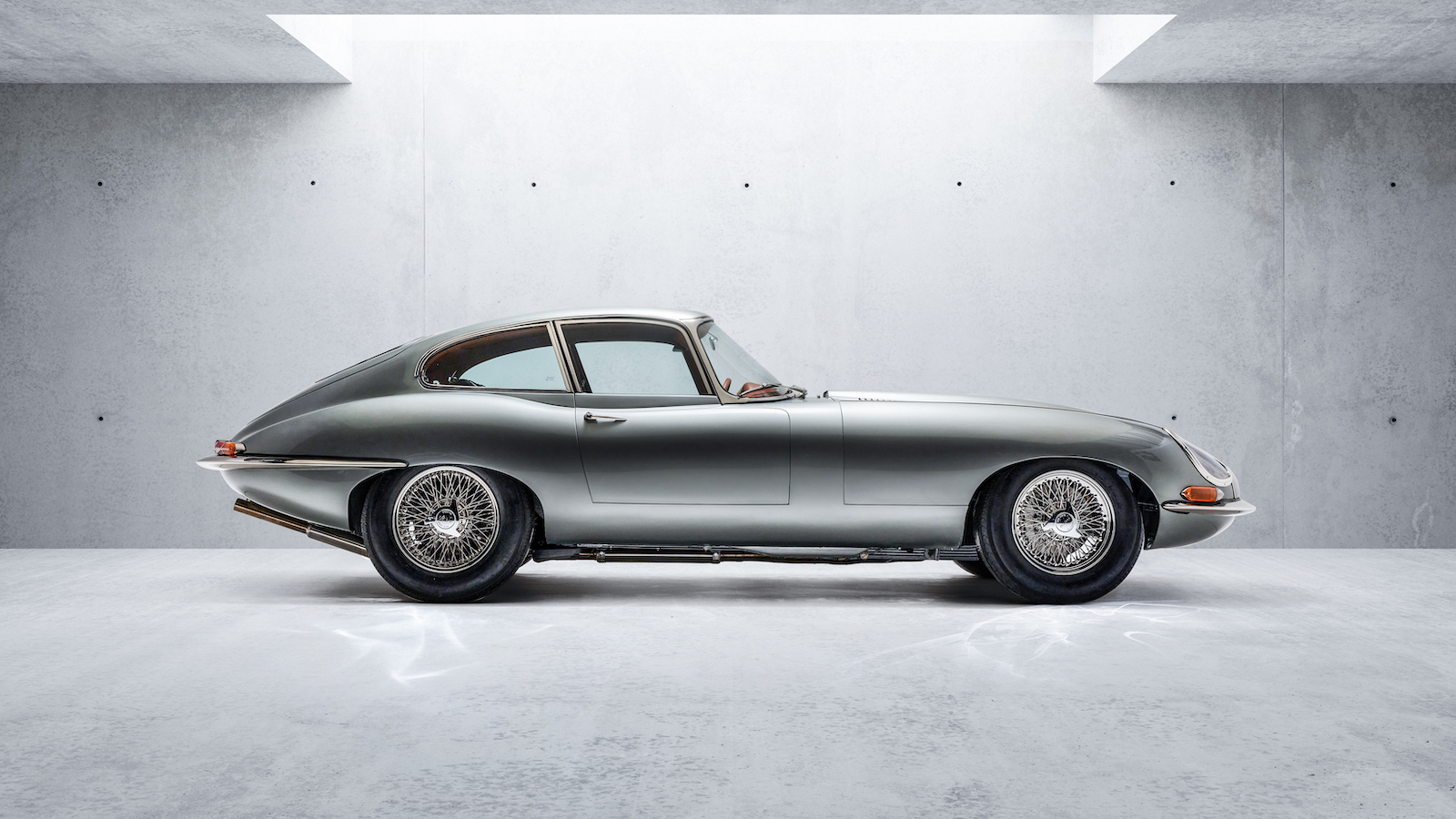
The British sportscar was manufactured between 1961 and 1975. The ‘series 1 cars were initially built with 3.8-litre six-cylinder engine that produced 198kW and sent the car to a top speed of 241km/h.
Porsche 911 (930)
No classic car list is complete without a mention of a Porsche 911. The Robb Report team debated at length about which iteration was favoured, ultimately landing on the 930. Produced from 1975-1989 the car carried over much of its initial iconic shape but was made, broader, angrier. The 930 catapulted Porsche into rarified air, producing at the time the fastest production car available in Germany at the time.
It also was the first of the 911s to be turbocharged, with Porsche badging the vehicle as “Turbo” at the Paris Auto Show in October 1974, taking the total output of the engine to 191kW and 329Nm of torque.
Lamborghini Countach
The Lamborghini Countach was the poster child for 80’s excess thanks to its outrageous “Italian Wedge” design and performance figures.
Produced from 1974-1990 the Countach was designed by Marcelo Gandini and was the first production car to incorporate scissor doors.
However, it doesn’t make this list for that alone, the earlier models – such as the LP400 saw a 276kW V12 in the middle of the car which gave the car a top speed of 288km/h. It was a supercar like nobody had yet seen with its ostentatious design, loud engine notes and searing performance – the weighing 1000kg dry, it saw 0-100km/h in 5.4 seconds.
Ferrari F40
Ferrari had long been lauded as the pinnacle of motoring, but it was losing its edge against Lamborghini’s wild designs. Enter, the F40. From 1987 to 1992 the mid-engine rear-wheel-drive sports car was built to celebrate the Italian marque’s 40th birthday.
The result was a 2-door, wild winged, supercar producing 352kWfrom a 2.9-lite twin-turbocharged V8 that powered from 0-100km/h in a little over 4.7 seconds and offered a top speed of 321km/h.
Those are impressive numbers, even by today’s standards, but that’s not why fans of the car love it so dearly. It’s the imposing design, iconic pop-up headlights which make it such an emblematic car of the time.
Renault 5 Turbo
Confused about seeing a Renault on this list? This isn’t your run of the mill hatchback. The Renault 5 Turbo was one of the first ‘Hot Hatches’ ever produced, built between 1980 to 1984, it was the fastest production car rolling out of France.
A boxy, aggressive body kit, once again designed by Marcello Gandini, ensured it turned heads. Meanwhile, the engine sits mid-mounted in the modified chassis, producing 118kW with a max torque of 221Nm through the rear wheels.
More important than its stats was its importance WRC, for which It was produced for homologation purposes and is representative of rallying through the 80’s and all that it was.
Alfa Romeo Giulietta Spider
Alfa Romeo is oft referred to as the car enthusiast’s car. The marque for true petrol heads and collectors. Few cars depict the Italian stylings and beauty like the Alfa Romeo Giulietta Spider. Inside the unibody construction, saw an Alfa Romeo Twin Cam straight-four aluminium alloy engine capable of 46kW.
While it doesn’t sound like a lot, that power proved plenty for a car that weighed only 960kg, especially with the top down, rolling through the Italian hills.
BMW E30 M3
The first BMW M3, based on the E30 3 Series, went on to create a series of iconic cars from the marque.
Originally produced to meet homologation standards for Group A touring rules, the new car featured an aggressively designed front splitter, sill panels and a range of other aerodynamic changes.
Produced from 1986-91 BMW used its own S14 four-cylinder engine which produced 147kW and gave the model a 0-100km/h time of 6.7 seconds and a top speed of 235km/h. However, today the car is prized for its balanced weight distribution and ability to dart around a race track.
McLaren F1
Produced from 1992-1998 the McLaren F1 is the most modern car on this list. Designed by British manufacturer McLaren Cars, the supercar would go on to become the world’s fastest production car, reaching 386.4km/h – a record It would hold for the following 12 years.
The McLaren F1 shocked the car world with its mind-bending speed – which it achieved courtesy of a 6.0 litre 12-cylinder BMW engine producing 461kW. The car became a watershed moment, light-years ahead of the supercars that we now know so well.
Ford GT40
It could be argued that the American motoring industry of the 50s and 60s could lay claim to multiple spots on this list. While there are many great designs (think Thunderbird, Impala, Corvette and other muscle-car classics) none took on the greats of Europe like the Ford GT40.
Its David vs Goliath battle in the 24 Hours of Le Mans permanently etched this car’s story into automotive history.
Only 105 Ford GTs were produced with only 7 of the road car only Mk III cars built. This later model was powered by a 4.78-litre engine offering 228kW of power
Datsun 240Z
The Datsun 240Z, or Nissan Fairlady Z or Nissan S30 as It was known around the world, was produced from 1969-1978 and is one of the most influential sports cars to be born out of the Japanese market.
Designed to compete against the European sports cars, the Japanese marque aggressively priced its new car that offered sleek styling and modern engineering.
Inside its stylish coupe body – that borrows its design cues from the jaguar E-Type – came a 96kW Datsun, 4-cylinder engine and proved a hit in overseas markets and sees its lineage of ‘Z’ cars continue through the Nissan brand to this day.
Bugatti Type 57S/SC
The cars in this list are framed by a level of mythology that runs deep into car culture. Like Rembrandt’s Storm on the Sea of Galilee, the mystique surrounding the Bugatti Type 57C Atlantic, in particular, La Voiture Noire (Jean Bugatti’s favourite car) and its disappearance, grabs car collectors’ attention.
Produced from 1834 to 1940, the French marque released a lowered version of its already popular 57C car. These went on to become some of the more iconic cars Bugatti produced. Only 43 lowered cars were produced and only two supercharged ‘SC’ cars were built with output at its maximum of 150kW. Today, the Atlantic Type 57s remain one of the world’s most collectable cars.
Subscribe to the Newsletter
Recommended for you
This Land Rover Defender 6×6 Restomod Is a Road Beast with Good Manners
Manz Motor Company’s $600,000 restomod is a gentler version of the original three-axle model.
May 30, 2024
These Are the Last Pure V-8 Bentley Continentals and Flying Spurs
The exclusive Continental GT, Continental GTC, and Flying Spur builds.
By Bryan Hood
May 16, 2024
You may also like.
You may also like.
The Orchards Veue Parkside Will Become a Landmark of Sophisticated Living in Sydney’s North-West
The Orchards Veue Parkside promises residents a harmonious blend of comfort, convenience, and natural beauty; a place to thrive.
It’s said that the average person will spend 62 percent of their waking time at home. With such a large part of our daily life spent within the confines of our sanctuary, why not make it fabulous if you can?
That’s the premise of Veue Parkside, a brand-new residential development offering in North-Western Sydney dedicated to sophisticated living. Located in the heart of Norwest in Sydney’s Hills District, Veue Parkside epitomises a new era of apartment lifestyle, seamlessly blending modernity with nature’s tranquillity; natural landscapes, green spaces, and lush parklands make up a large part of this enticing residential community.
But, perhaps, its greatest offering is what’s on the inside.

Featuring a wide array of one-, two-, three- and four-bedroom apartments across a total of 156 apartments, some offering two-storey living. Each home offers a light-filled haven that harmoniously integrates contemporary touch points with natural surroundings. Adorned by lush greenery and expansive parklands, Veue Parkside offers a refreshing perspective on urban living where residents have premium offerings at their doorstep, from delectable dining to world-class shopping, and more.
Sekisui House is behind the visionary project—a name synonymous with excellence in community development and home building since 1960—with every element of this up and coming project thoughtfully considered. From the architectural vision to the selection of materials, no stone has been left unturned.

Residents will also enjoy exclusive residential amenities, including an outdoor podium, community and function centre including a music room, a communal BBQ area, well-appointed gym, indoor heated swimming pool and concierge. Additionally, the extension of the Linear Park will be accessible to both residents and the public, providing a serene escape within the bustling community.
Of course, Veue Parkside is only part of the picture. The Orchards masterplan spans 8.1 hectares of North-Western Sydney, promising to bring a dynamic mixed-use community to the suburb of Norwest. Upon completion, the ambitious development will boast 1,300 new apartments, extensive open spaces, and a variety of community amenities—one of the most significant residential projects in Australia in over a decade.

Soon, Veue Parkside will be offering new releases set to celebrate the epitome of modern living in the heart of an idyllic community. To enquire further and learn more about the residential development, visit Sekisui House or call 1800 606 808.
You may also like.
These Next-Gen Supersonic Jets Want to Replace the Concorde. Will They Ever Take Off?
Skeptics think not, but a core of true believers are inching forward with new designs and test flights.
To dig into the state of supersonic flight these days is to invite an unlikely conversation about cell phones. Three out of five experts in the field compared the smartphone of 20 years ago with a future generation of jets that hope to blow past Mach 1.
“Think of the original iPhone. In those early days, it made huge leaps every year. That’s where we are with supersonic,” says Blake Scholl, CEO of Boom. “Tech advances in S-curves. Products go through periods of slow development, then rapid improvement, then level off again to incremental gains.”
The Concorde, the world’s only commercial supersonic jet, was the big, clunky plastic phone that the very wealthy first had in their cars, while the new breed of supersonic jet is a flip phone with a keyboard that, according to supersonic’s believers, will eventually morph into the sleek, multifunction supercomputer that has become so affordable that it’s available to almost everyone.
“It’s taken longer than we would’ve hoped, but there will absolutely be supersonic flight,” says Vik Kachoria, the CEO of Spike Aviation. “We think supersonic will offer a lot of value and will be very useful.”
Not everyone shares his certitude.
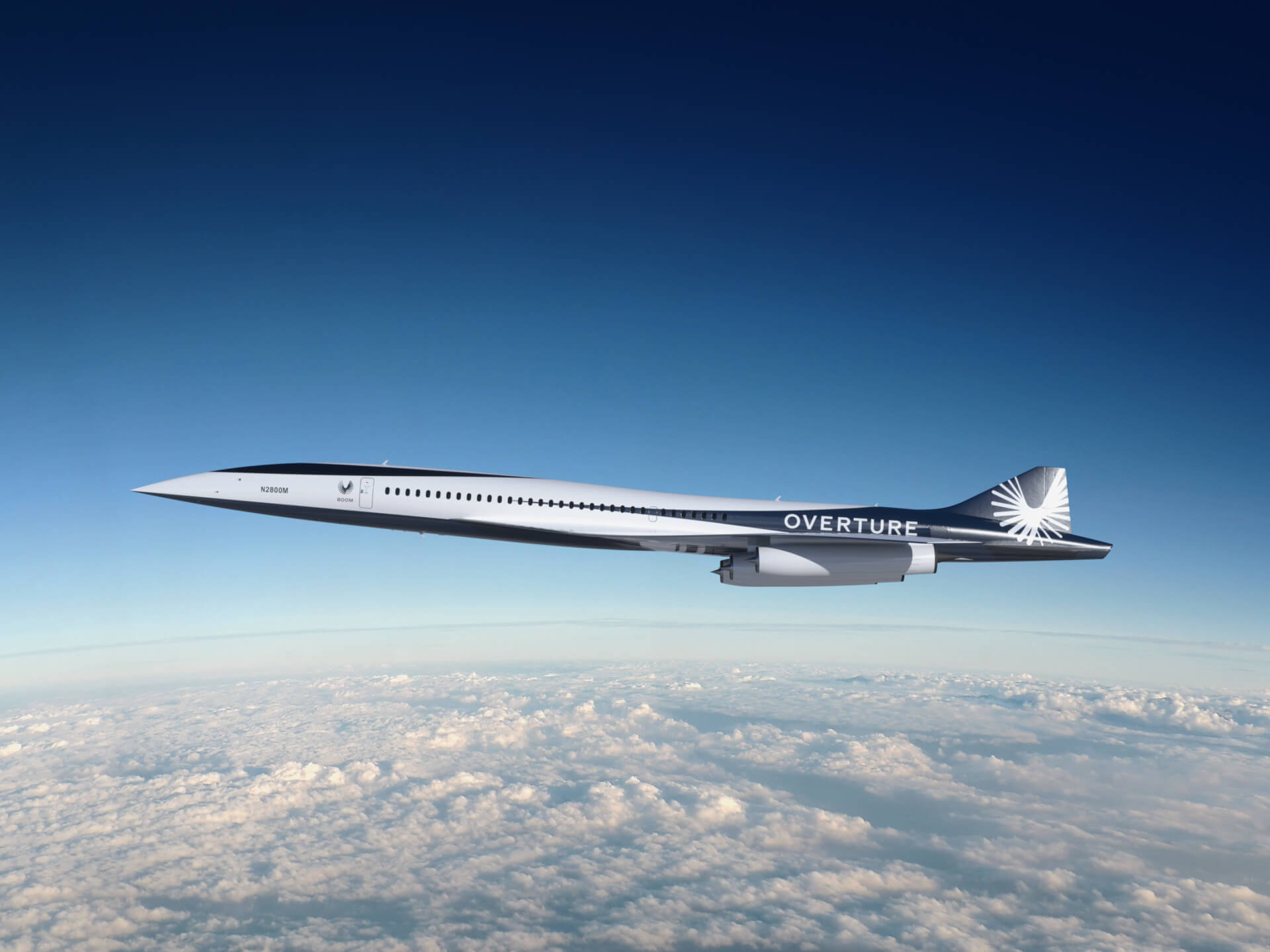
Boom Aerospace
“If you go back and look it up, starting from the ‘90s, proponents of supersonic flight say it is always 10 years away,” says Brian Foley, a business aviation industry consultant. “Why 10 years? Probably because it’s a number that’s not too distant, but far enough that when the time comes, no one will remember all the promises you made and failed to deliver on.”
One hopeful, Aerion, which counted Boeing and Lockheed Martin as investors, shuttered in 2021 after nearly 20 years of planning for its next-generation AS2 supersonic business jet. If any private company had the potential create a new commercial supersonic reality, it seemed to be Aerion. The backers invested billions and hired top aerospace engineers to work on the minutia of flight beyond Mach 1.0, or 1234 kph.
Then, out of the blue, the company shut down because it couldn’t secure long-term investors who believed in supersonic’s potential. “They had put together amazing talent,” said aviation consultant Rollie Vincent, who did some work for Aerion, shortly after the closure. “The number of PhDs per square foot was off the charts,” he said. “But they weren’t building things. They were trying to refine design and purify aerodynamics. At some point, everybody, including investors, want to see real parts.”
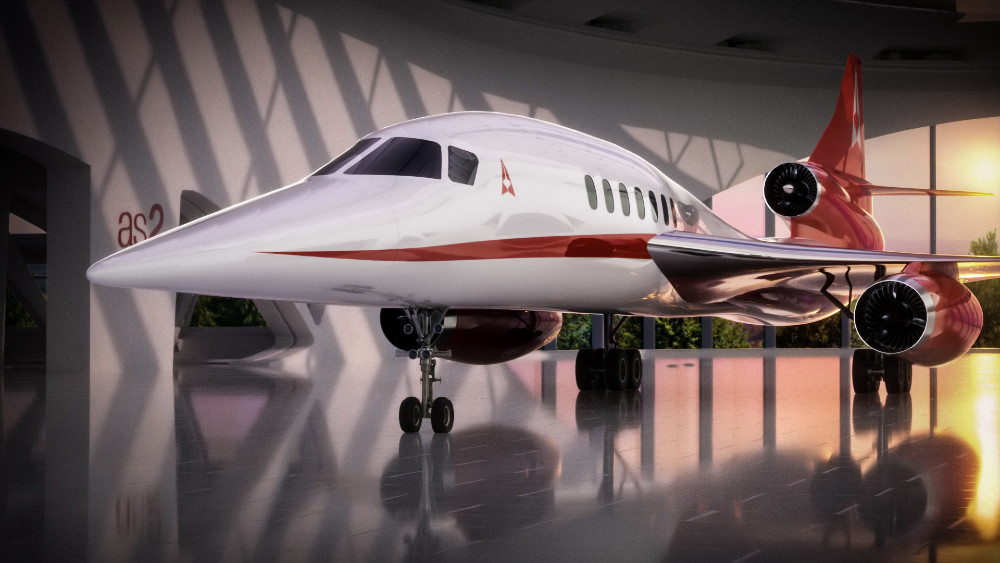
Aerion
Boom, now leading a handful of private supersonic aircraft developers, seemed to realise early that it needed hardware to demonstrate its progress. The company launched its XB-1 demonstrator jet on March 22. Its initial flight topped out at less than 240 knots, but for the first time since the Concorde, a non-military plane built for supersonic speed executed a successful flight. If future test flights progress as projected, the XB-1 could make a run at the sound barrier within a year. And the company’s 150,000-square-foot production facility in Greensboro, N.C., is on schedule to open in late ‘24.
Not far behind, NASA’s X-59 experimental craft should make its first flight later this year. The jet, a product of the QueSST project, represents the government’s attempt to reduce the sonic boom, a key development for supersonic’s commercial future, since it’s illegal to break the sound barrier over land in the U.S. and most other countries.
“The key to lowering the boom is in shaping the airplane and the wing, smoothing them out so the shock waves don’t combine,” says Dave Richwine, deputy project manager for technology on the X-59. “NASA is working at a fundamental level and, hopefully, the industry will bring it all together.”
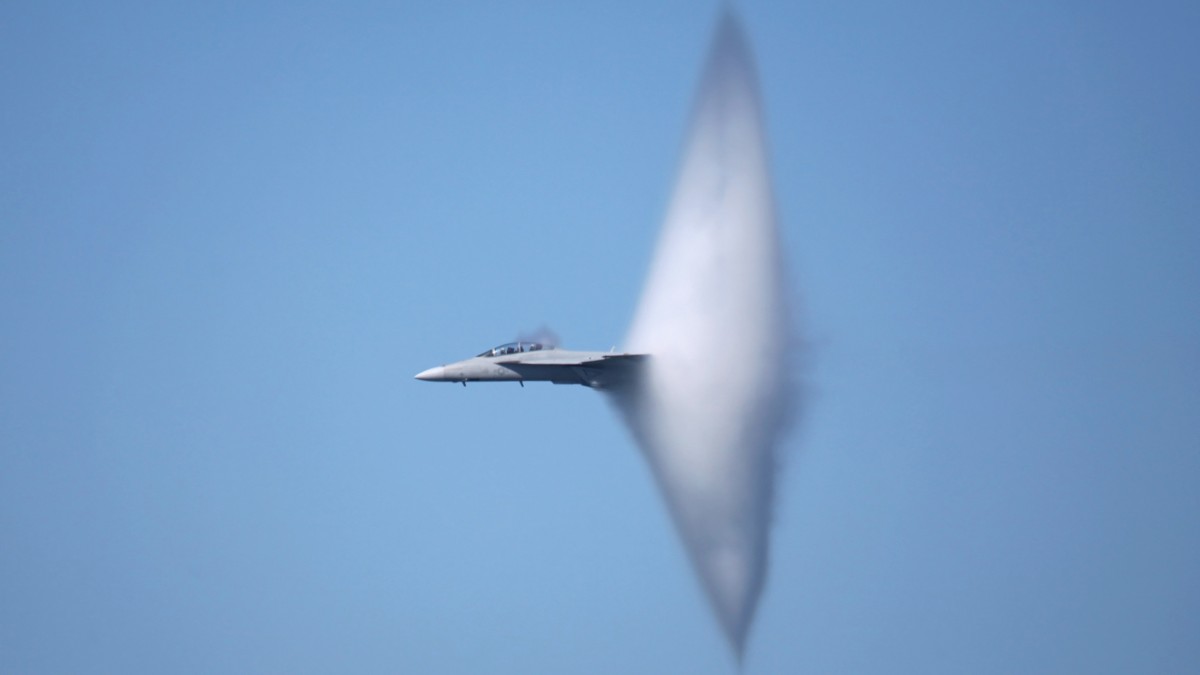
Getty
There are signs that approach is working. Spike has absorbed much of NASA’s work while modifying and applying the theories to a larger craft, its 12- to 18-seat business jet called the Diplomat, which won’t launch until at least 2026. Like the X-59, it aims to reduce the boom by manipulating and flattening the sonic waves so they’re directed upwards and largely cancel each other out. The goal is a sonic “thump” or a ground-level sound of roughly 75 decibels perceived, akin to a closing car door.
Exosonic, which is developing unmanned supersonic drones for military training and a 70-seat passenger jet, expresses a similar goal on sound, and is part of the group rallying to change the current law. Instead of a speed limit, builders want a sound limit, so it doesn’t matter how fast a plane flies, so long as it doesn’t rattle the windows of the houses it passes over.
Boom is less preoccupied with noise. Scholl says at some point, a standard will be issued and Boom will meet it. For now, the company plans to address the issue by only going supersonic over the ocean. Over land its planes, says Scholl, will operate 20 percent faster than current commercial jets.
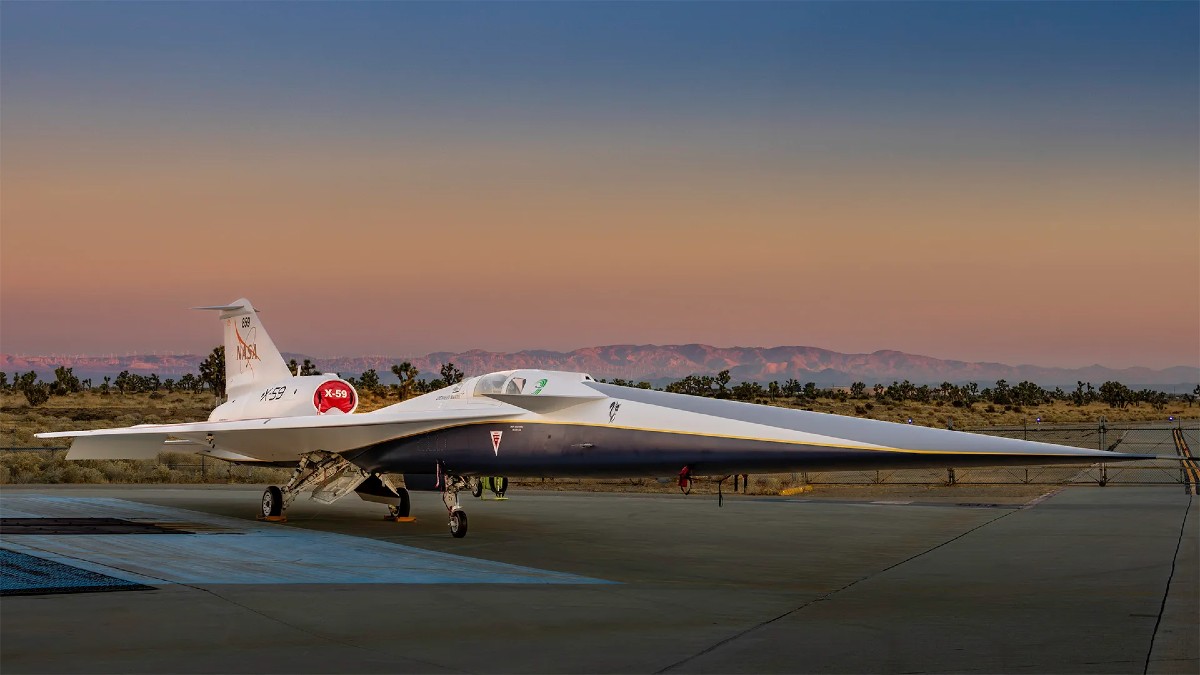
NASA
In theory, Boom’s XB-1 will eventually lead to the Overture, the 64- to 80-seat commercial aircraft the company plans to build once it dials in the technology. American, Japan Air, and United have all put in non-refundable preorders of Overtures, and Scholl hopes the plane will be flying with passengers by 2030.
“We’re very engaged with the FAA and we’ve already received our G1 certification,” Scholl explains. “It’s a long list of boxes we have to check, as it should be, but we’re locked in on the needs and all we have to do is meet them.”
All these supersonic projects feature a modified delta wing and a long, tapered nose that gives the craft a more futuristic, streamlined profile than the Concorde. Aesthetically, the designs are attractive, but they also make it impossible for pilots to see, a problem solved by a system of cameras mounted on the exterior. The XB-1 includes an augmented reality overlay with guidance for the pilots.
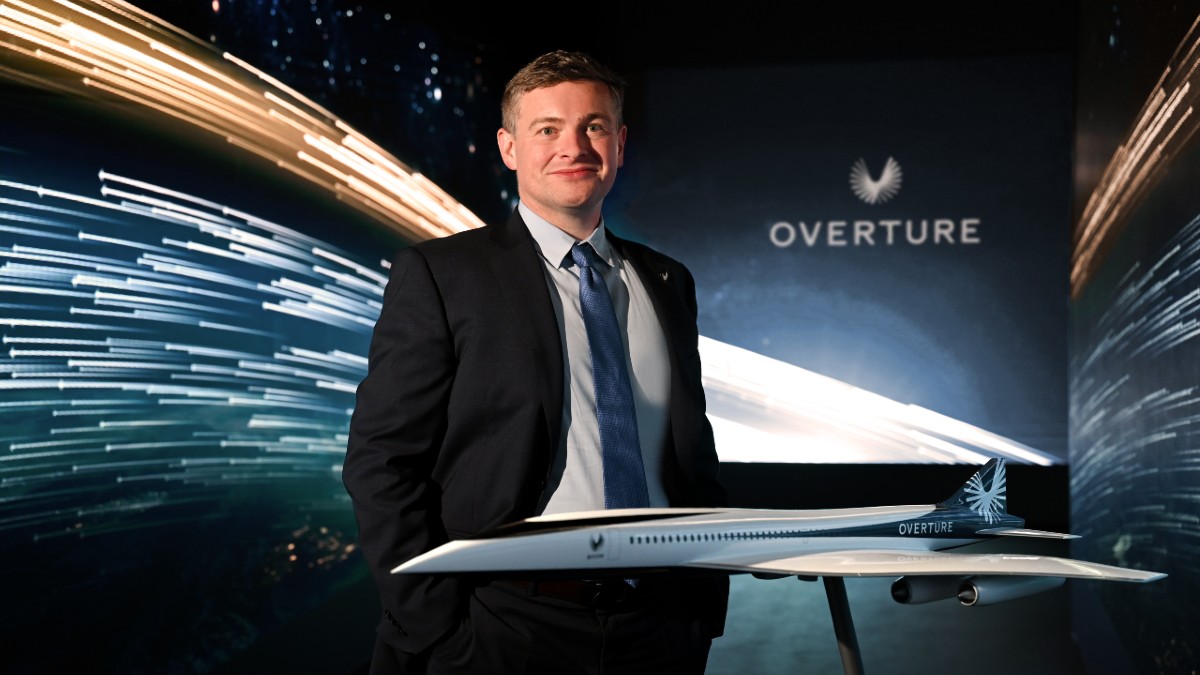
Boom Aerospace
Spike, which has a longer development timeline, eliminated almost all the windows on the body, replacing them with hi-definition flat screens that run the length of the cabin, on which they can project the exterior view—or a movie or “anything you can put on a computer screen,” says Kachoria.
The Spike chief executive compares the Diplomat to a Gulfstream, with a customisable interior and the option of plush, oversized seats, and Exosonic too plans a business jet version, with three suites, executive seating, and full-recline chairs. Across the supersonic category, weight limitations will reduce the capacity for the kinds of comforts found in typical first-class service, but other considerations will, presumably, make up for any lack of poshness and interior space. “Instead of getting upgraded to business class, someone might get upgraded to supersonic,” says Kachoria. “You won’t have fancy plates, but you’ll arrive at your destination in half the time.”
Foley, who did market research on supersonic jets when he was employed at Dassault Falcon and has worked with Spike, remains skeptical. He forecasts a market of about 300 jets for private owners, or about 30 planes a year for 10 years: “Is that even enough for an engine manufacturer to participate?”
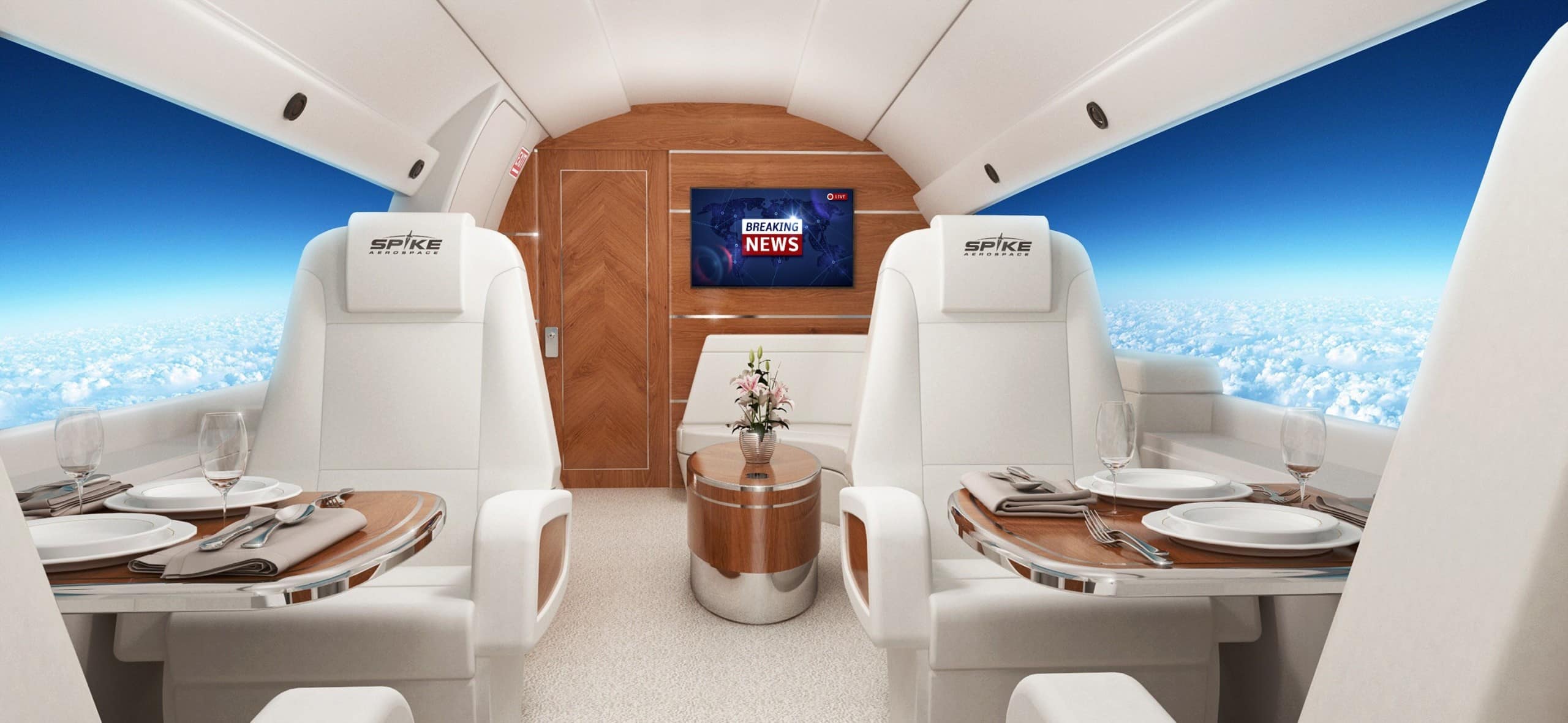
Spike Aerospace
Apparently not. When Aerion shut down, GE Aerospace halted three years of development of the Affinity supersonic engine designed to power Aerion’s AS2. GE, along with major engine builders Pratt & Whitney, Rolls-Royce, Honeywell Aerospace and Safran all passed on developing an engine for Boom, according to AIN.
That left the company with no option but to form an alliance that included Florida Turbine Technologies, GE Additive and StandardAero to invent a propulsion solution, an engine called the Symphony.
“Designing an engine is no easy task, especially from scratch, and it’s potentially a multibillion-dollar exercise beyond designing the plane,” Foley told Robb Report a year ago.
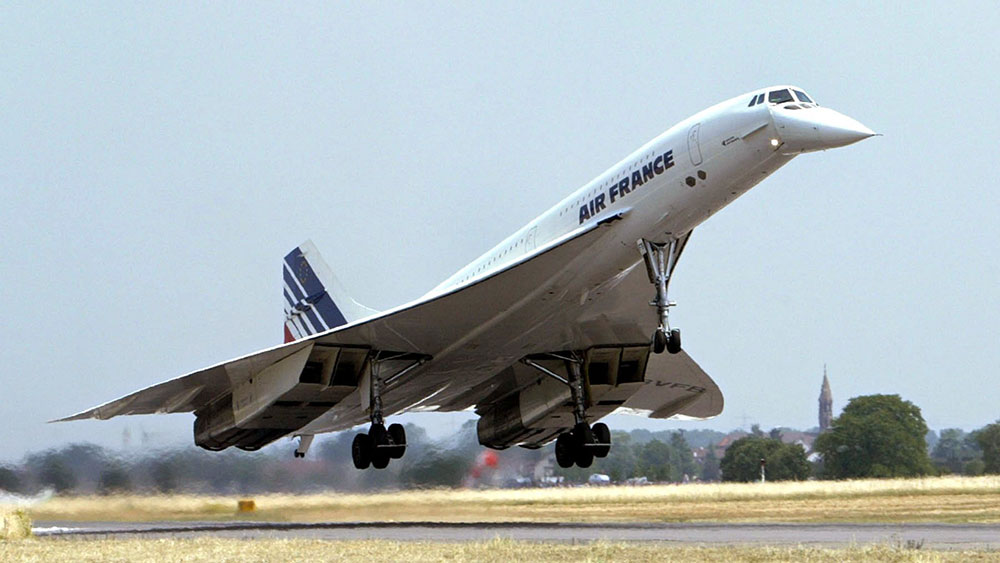
Getty
Despite that, Boom has built the XB-1 and taken it to the sky. “The technology and supply chain exist,” says Scholl. “There’s no fundamental new science—every key technology in this airplane has already flown before.”
In early 2021, Subaru, Mitsubishi Heavy Industries, and several other companies formed Japan Supersonic Research with a goal of having an SST passenger jet by 2030. They partnered with the Japan Aerospace Exploration Agency and have access to JAXA research going back to 1997. Shigeya Watanabe, deputy director, recently told Aero Society it was working on improving current technologies as well as developing more sustainable propulsion technologies.
Sustainability was a non-issue when the Concorde first took off in 1969. It burned four times more fuel than a 747 on a Paris-New York flight. Fifty-five years later, it’s now a core challenge for aviation, especially supersonic aircraft. Environmental scientists Anastasia Kharina and Tim MacDonald wrote in a study for the International Council on Clean Transportation that “commercial SSTs could be three times as fuel intensive per passenger as comparable subsonic aircraft.”
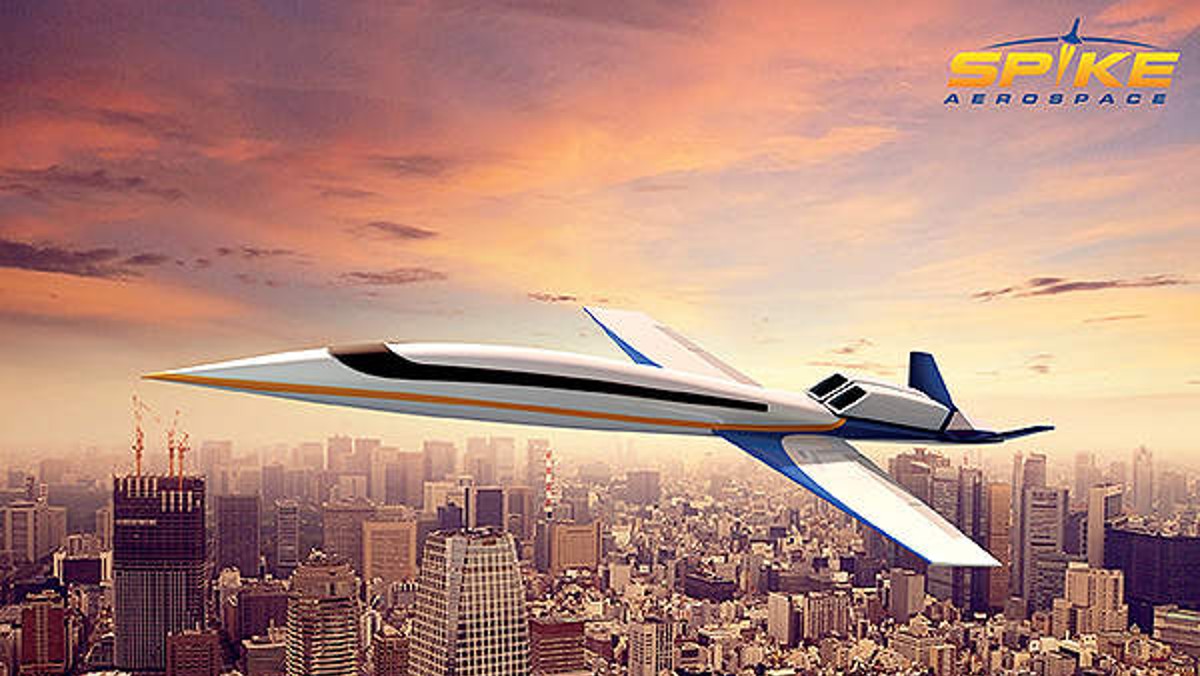
Spike Aerospace
Boom and Exosonic hope to solve the green issue by designing their engines to run on 100-percent sustainable aviation fuel (SAF) while Spike is exploring electric and hydrogen. “The technology for design is so much faster now,” says Kachoria in discussing the engineering challenges. “We can make modifications and see the result onscreen in seconds. They built the Concorde with slide rules and drafting paper and did 10 total iterations. We can do 1,000 simulations in a few hours.”
Kachoria sees supersonic’s potential upside as 900 or more planes over 20 years going to a mix of high-net-worth individuals, fractional leasing services, and airlines. Scholl is even more bullish. “Our ultimate goal is to have supersonic flights on all routes for all passengers,” he says. “These planes will create their own need. As soon as people see others crossing the Pacific in four hours, they’ll say, ‘Why are we sitting in this metal tube for so long when we don’t have to?’”
If Boom and the other supersonic builders succeed, how long will it be before someone is asking a similar question about their jets? Destinus and Hermeus are also aviation start-ups, and they’re developing hypersonic jets that will travel at up to five times the speed of sound.
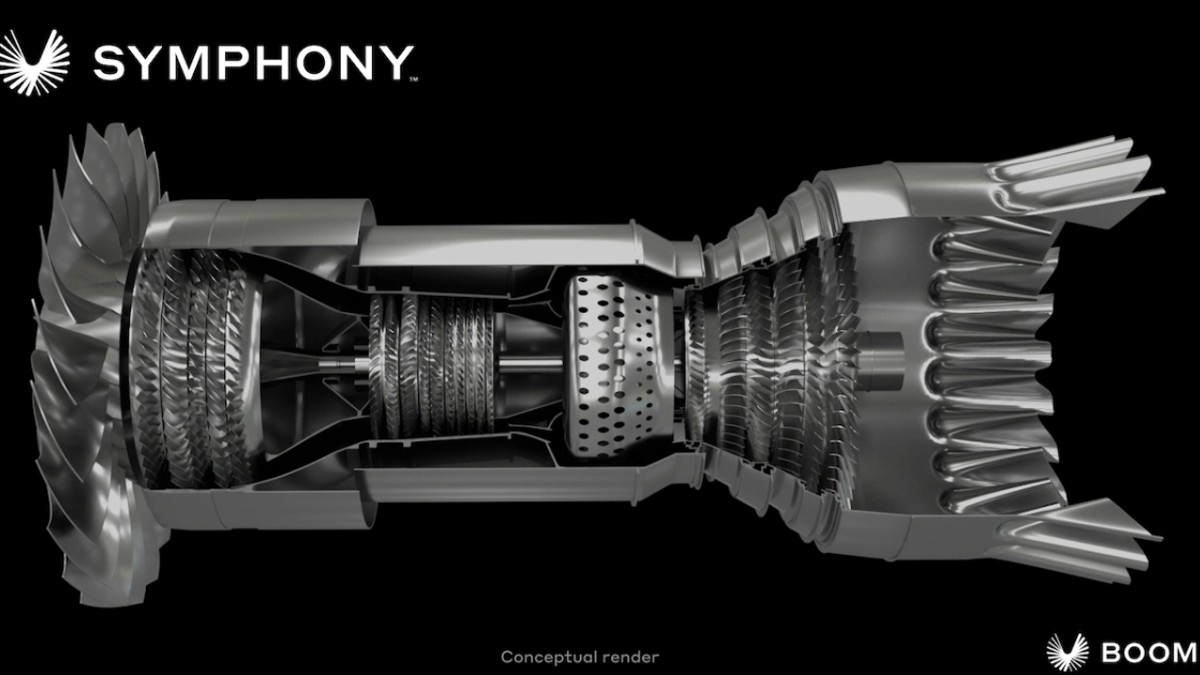
Boom Aerospace
Pipe dreams or the birth of a new era in flight? The outcome could depend, as Aerion found out, on whether the manufacturers can find the start-up funds, amounting to many billions, for a viable niche in commercial and business aviation. “Never say never,” says analyst Foley. “But these things tend to move at the speed of money, and investors don’t seem to have the risk appetite.”
—
This article was originally published in Robb Report US.
You may also like.
Not All Great Super Tuscans Are Red—Get to Know the Region’s Outstanding White Wines
The lighter side of Super Tuscans.
Those of us who drink Italian wine often gravitate towards the three B’s: Barolo, Brunello, and Bolgheri, the last of which you may recall is the original home of Super Tuscans. This impressive sounding but unofficial moniker was originally lavished on a group of wines made with grapes that are not native to Tuscany such as Cabernet Sauvignon, Merlot, and Cabernet Franc.
One of the first wines to be given the sobriquet was Sassicaia, whose 1968 inaugural vintage was released in 1972 and was classified as a vino de tavola, or table wine, because it fell outside of the regional DOC guidelines. Fans of this plus wines like Masseto, Guado al Tasso, and Tignanello may be surprised to learn that the regulations drawn up for Bolgheri DOC in 1983 only included white wine and rosé; reds were not added until the rules were updated in 1994. Even more surprising is that exciting white wines from varieties such as Sauvignon Blanc, Chardonnay, and Viognier are made in Bolgheri and throughout Tuscany.
Two of the best and most well-known white Super Tuscans, Ornellaia Bianco and Querciabella Bàtar, are vastly different wines; in fact, they don’t even fall into the same denomination. Made with 100 percent Sauvignon Blanc, Ornellaia Bianco 2021 hails from Bolgheri DOC, while Querciabella Bàtar 2020, a 50-50 blend of Chardonnay and Pinot Bianco, is a Toscana IGT wine. Shorthand for Denominazione di Origine Controllata, or controlled designation of origin, Bolgheri DOC has a set of production requirements for all wines made there. A bottle from Bolgheri labeled Bianco may have any amounts of Sauvignon Blanc, Vermentino, or Viognier; if the label on a wine from there reads Sauvignon Blanc or Viognier, it must have at least 85 percent of the variety. Since its debut in 2013, Ornellaia Bianco had been made with mostly Sauvignon Blanc blended with Viognier, but the two most recent vintages, 2020 and 2021, have been 100 percent Sauvignon Blanc.
In both seasons, the final decision to use only Sauvignon Blanc was made after a blending session. Ornellaia estate director Marco Balsimelli—who moved into the role at the beginning of this year after working in Bordeaux since 2010—believes that Sauvignon Blanc in Bolgheri has a “more mature” expression than in cooler regions, “yet, it succeeds in retaining acidity and complexity,” he tells Robb Report. That said, he credits Ornellaia’s vineyard site for the quality of the Sauvignon Blanc it produces, pointing to its altitude, proximity to the Magona Forest, and rocky clay and limestone soils as major contributors. “All these conditions allow for a cooler, windier, and slightly more humid climate compared to other areas of Bolgheri, ideal characteristics to produce a great white wine,” he says.
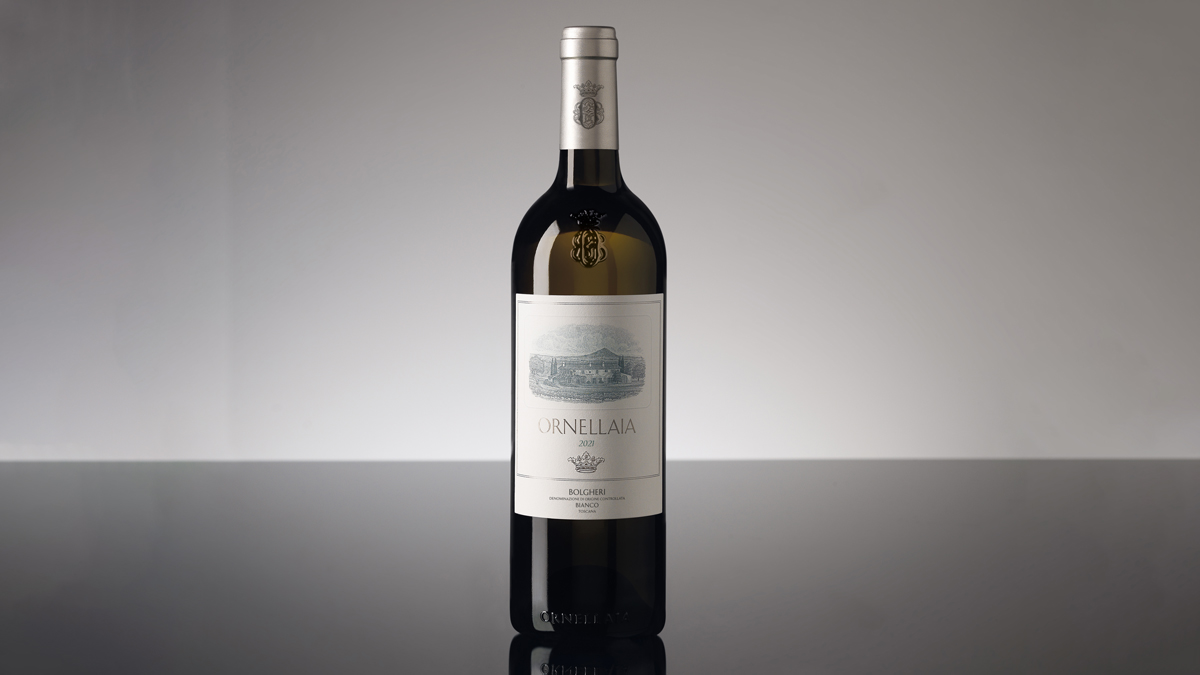
Ornellaia
Querciabella Bàtar is an IGT wine; the abbreviation stands for Indicazione Geografica Tipica (typical geographic indication) and was created for wines that don’t fall into DOC or DOCG categories but are of a higher level than vino de tavola. This allows winemakers to craft quality wines using what are generally considered “international” rather than with local varieties such as Vermentino or Trebbiano. The Chardonnay and Pinot Bianco for Bàtar are from several vineyards throughout the Tuscan region of Chianti, which is better known for its Sangiovese-based reds. Querciabella winemaker Manfred Ing tells Robb Reportthat throughout Chianti there is “ample sunshine with beautiful, cool evenings, which allow for perfect ripeness and fruit concentration while maintaining freshness and finesse.” He acknowledges that a diverse array of vineyards sites brings different qualities to Bàtar such as concentrated fruit, intense floral aromatics, minerality, freshness, richness, and citrus notes. Ing, a native South African uses less than 15 percent new oak and minimal lees stirring to coax out greater fruit expression in this outstanding wine.
Other bottles to look for include Cabreo La Pietra Chardonnay Toscana IGT from the Folonari family; Ca’ Marcanda Vistamare Toscana IGP, a blend of Vermentino, Viognier, and Fiano from the Gaja family’s estate in Bolgheri; and Isole e Olena Collezione Privata Chardonnay Toscana IGT, which is from an estate in Chianti owned by the Descours family. Emanuele Reolon, the winemaker and estate director at Isole e Olena maintains that several attributes make Tuscany perfect for the cultivation of Chardonnay, and that Isole e Olena’s vineyards are particularly suitable thanks to its schist and limestone soils, a microclimate that offers cooling sea breezes, altitude and north-facing exposure, site-specific planting of Chardonnay within the estate, and the vineyard team’s focus on sustainable practices.
As many of us head to Tuscany this summer, we will be coasting along twisting roads lined with vineyards to visit historic medieval towns like Montalcino, Montepulciano, Bolgheri, Siena, and San Gimignano, filled with ancient stone buildings, incredible restaurants, and tiny, family-run wine shops. We should remember that in addition to the Brunellos, Vino Nobiles, Chianti Classico Gran Seleziones, and Cabernet- and Merlot-based wines we’ll be stocking up on, we should explore the region’s broad array of white wines. After all, man cannot live on red alone.
You may also like.
Big-Wave Surfers Kai Lenny and Maya Gabeira on Why They Actually Wear Dive Watches in the Water
The legendary sports figures explain that timing is everything when you’re riding the biggest waves in the world.
“The cool thing about surfing is it’s all about timing,” Kai Lenny told press during a TAG Heuer event in Tuscany for the launch of its new and improved Aquaracer. “Everything’s about timing. When you’re on a wave, the wave is this fluid object, and it’s constantly changing. And you’re almost predicting the future, even if that future is only a couple of seconds ahead of your next move. When you’re traveling down a wave, you have to almost see things before they happen.”
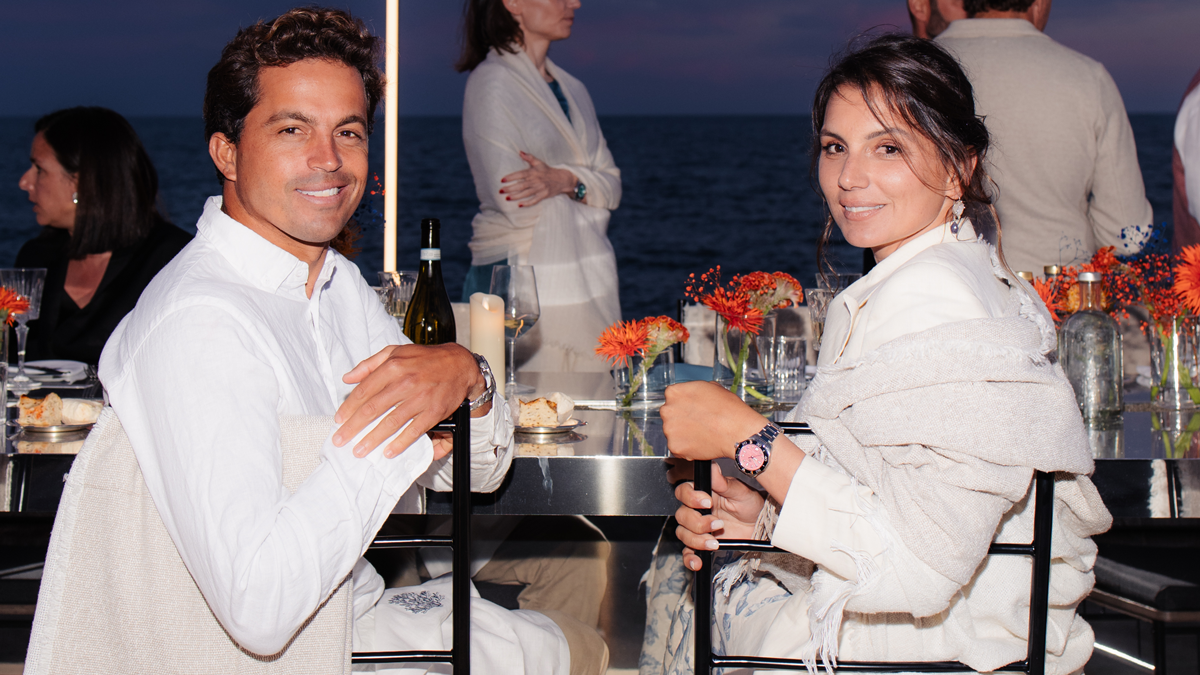
Lenny and fellow big wave surfer, Maya Gabeira—two of the best big-wave surfers in the world—were on hand to promote TAG Heuer’s new timepieces, but as far as watch brand ambassadors go they are among the most authentic. Unlike other sports figures who mostly promote timepieces as a lifestyle correlation to their adrenaline pumping careers but rarely use them while competing, both Lenny and Gabeira say they feel their timepieces are essential on the open water. (In today’s world, a racecar driver is definitely not timing his laps with a chronograph while burning rubber on the track during a Formual 1 race, and SCUBA divers long ago abandoned mechanical watches, for instance.)
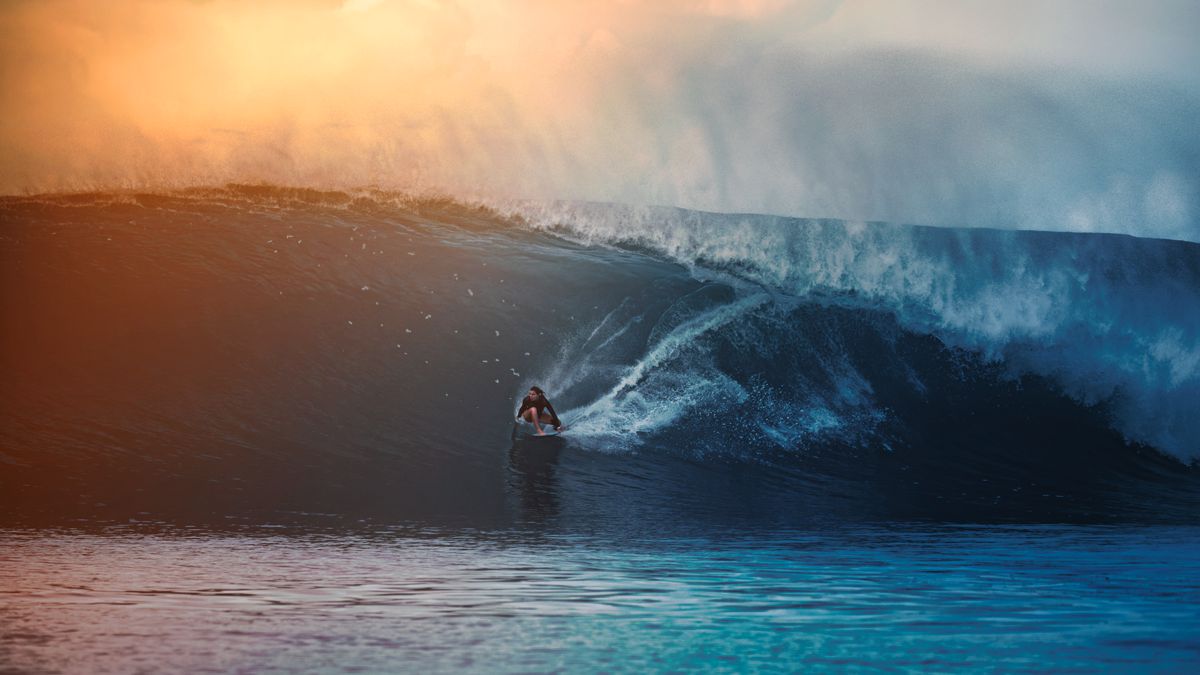
When you are surfing 80-foot waves at Jaws in Maui or 100-foot waves at Nazaré in Portugal (the biggest waves in the world, equivalent to the height of a 10-story office building) timing can be a life or death calculation. Just ask Gabeira, who famously nearly died after a wipeout at Nazaré that plunged her underwater for 12 minutes. She says those 12 minutes actually felt incredibly slow as she contemplated her life during the time which she was in the process of losing consciousness and nearly drowning. “I thought a lot,” she says. “It went from thoughts and emotions to a very physical kind of bad. You start feeling all the physiology change. I’m a free diver as well, so I knew what my body would do if I was lacking oxygen. So, I started being very focused on my physical abilities and what I had to do and how much time I still had. And then after it just went black, to be honest.” She says she rarely thinks about the experience now but it took her about a decade to recover from the trauma.
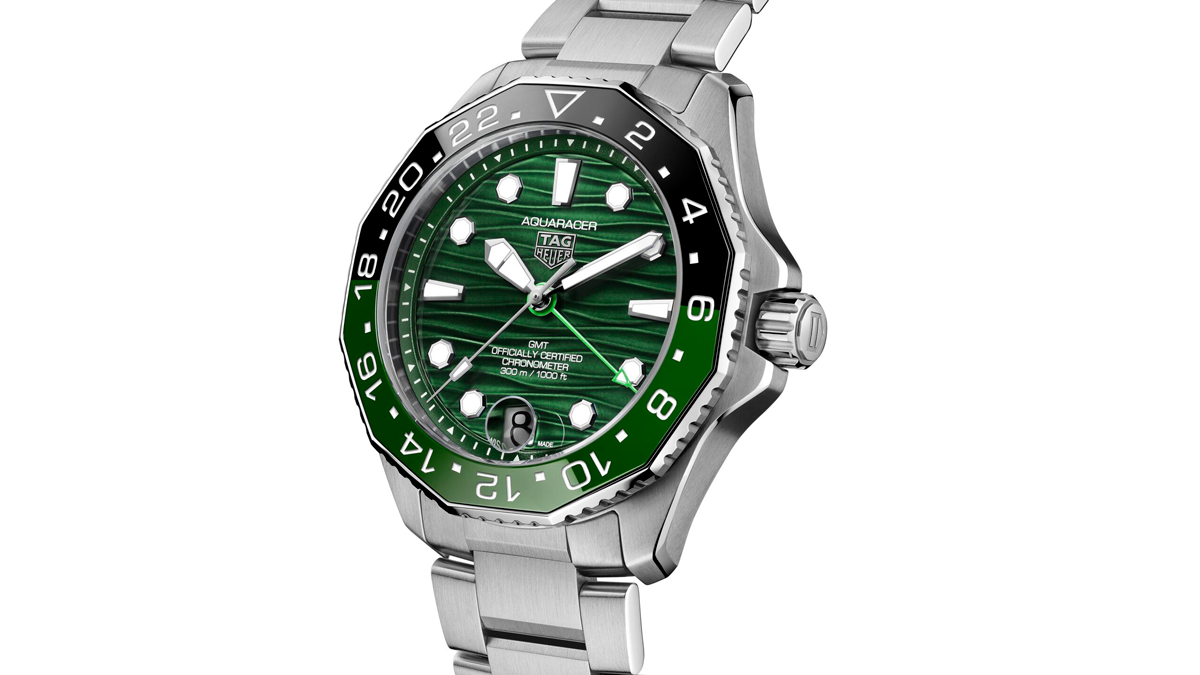
Through their best and worst rides, both Lenny and Gabeira say their timepieces are constant companions. In fact, Lenny has gone through at least five Aquaracers in the deep blue. “It comes from just wear—you’re in big waves and everything breaks at one point, including yourself,” says Lenny. “And I use it as a tool. I’m always timing waves.” He says when he’s competing, especially, he will time things down to the second to make sure he’s catching the big waves, which come approximately every 30 minutes. “It comes down to when you paddle for the wave, how much time you have to allow yourself,” says Lenny. “It’s amazing how often I’m actually like dialing the watch to be like, okay, in two minutes from now, a set is coming and because of the ocean wavelengths, it’s so consistent. You can actually time the ocean and predict when it’s going to come in just off of your timepiece.”
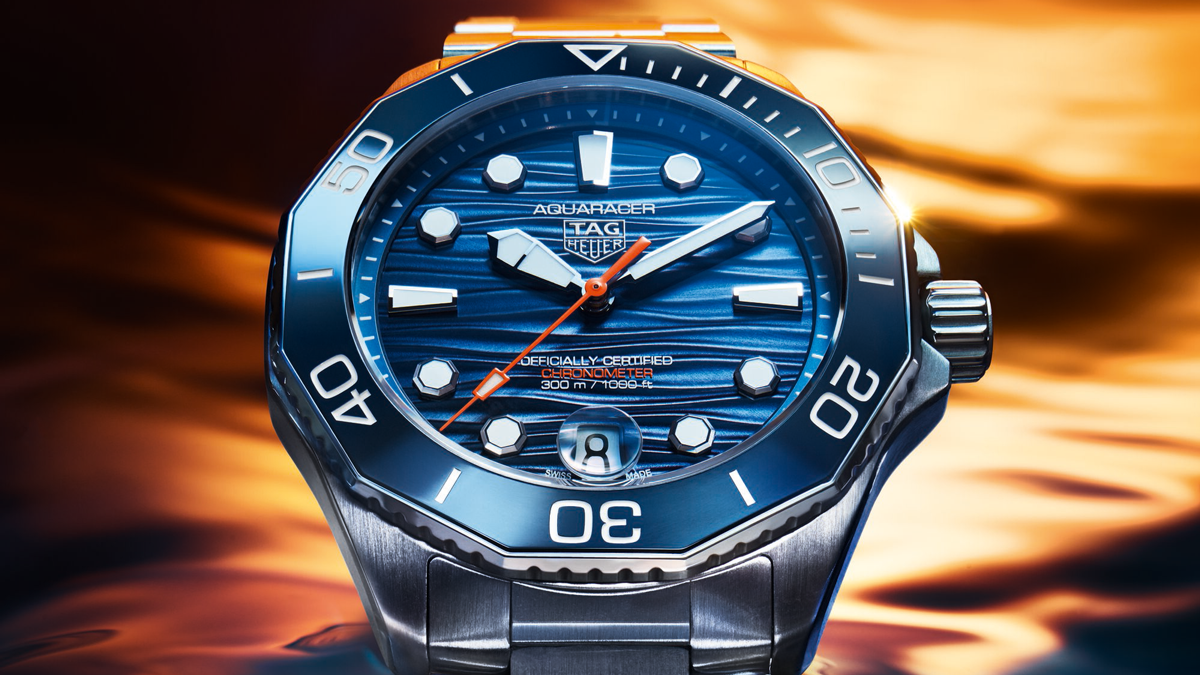
One big bonus of the new TAG Heuer Aquaracer, according to Lenny, is that he feels the rubber strap is more secure than in previous models. Other updates to the timepiece include a more legible minute track and a more prominent hour hand featuring a shield shape, as well as a wavy new dial (which will, no doubt, draw comparisons to the Omega Seamaster, but the Aquaracer comes in at a cool USD$3,800 vs. USD$5,900 for the Seamaster, which may be a bit easier to swallow for those that are into hardcore surfing and prone to losing their timepieces like Lenny). The case has been reduced from 43 mm to 42 mm, in keeping with current trends towards smaller sizing. It is, of course, water resistant to 300 meters in keeping with the best dive watch standards.
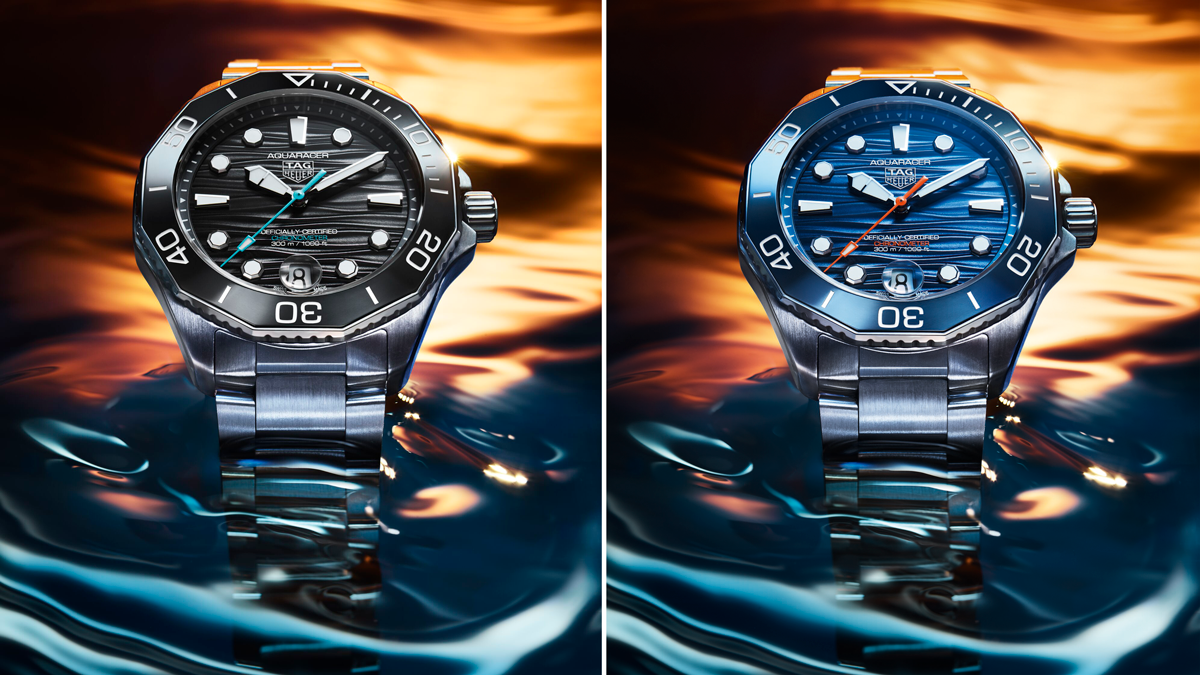
While timepieces are truly practical tools for these big wave surfers, they’re also mementos. Lenny says his first Aquaracer he got in 2015 is his most treasured because he wore it during his first big wave competition at the infamous Jaws surf spot in his hometown of Maui. “That was the one watch that I consistently wore for the longest,” says Lenny. Against all odds, he still has it, and he says it’s a reminder of a time when he had to pass through a certain veil of fear. “But you know, it’s a good throwback to an awesome time in my life when I was much younger and got to cut my teeth in the big wave world,” he says.
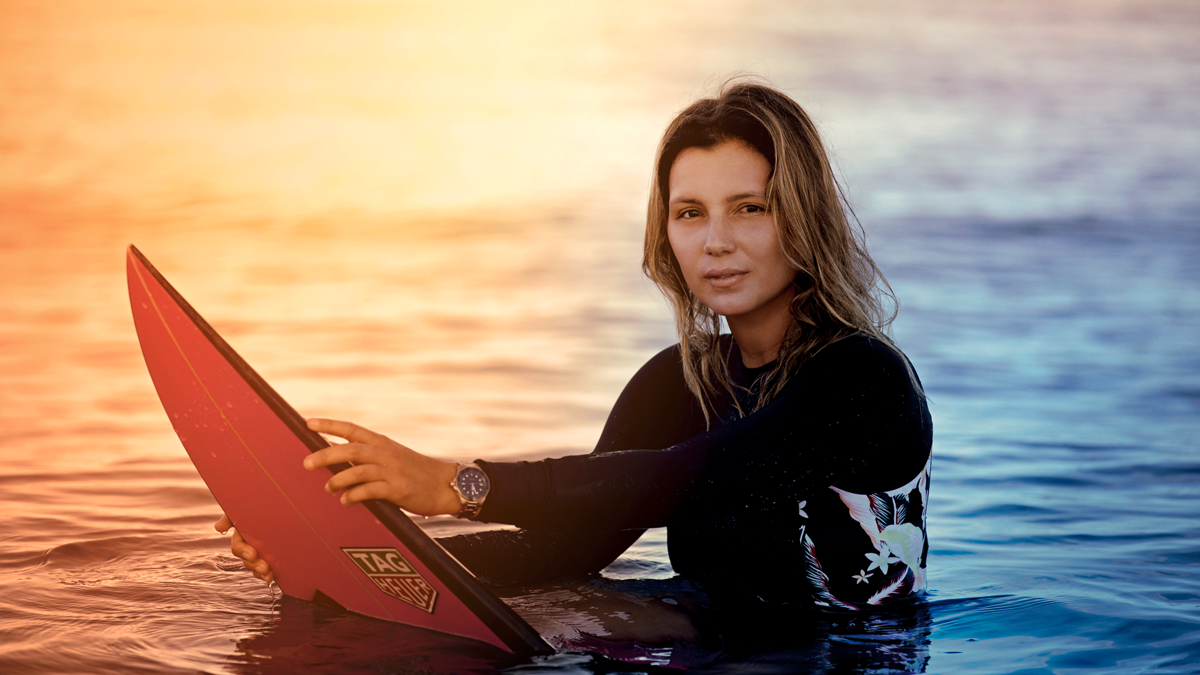
For Gabeira, the most poignant reflection of time is her own accomplishments. Incredibly, she didn’t start surfing until the age of 13 (for comparison, Lenny has been surfing since the age of 4.) A boyfriend introduced her to the sport and she fell in love with it from the first ride. He broke up with her, but the ocean remained her faithful companion. “I went to Australia and then I came back and I was like, ‘Ok, I’m just going to keep improving until I’m so good, he never has a chance around me in the ocean again,” she says, reflecting on that time in her life. “He was the surfer and I was the beginner. I was like, ‘You watch it flip.’” She is now one of the best big wave surfers on the planet and in 2020, when she surfed a 73-foot wave in Nazaré, she set the record for the biggest wave ever surfed by a woman. How’s that for perseverance? It’s proof that it’s never too late to be your best and with serious dedication and an near obsessive investment of your time, you just might, like Gabeira, realise your wildest dreams.
—
You may also like.
After a Record-Breaking Auction, Sotheby’s Watch Department Gets a Leadership Shake Up
After Sylvester Stallone’s Patek Philippe Grand Master Chime sold for USD$5.4 million, Geoff Hess, Sotheby’s former head of watches for the Americas, and international watch specialist Sam Hines have both been promoted.
When Sotheby’s held its Important Watches sale in New York on June 5, Sly Stallone’s Patek Philippe Reference 6300G-010 Grandmaster Chime sold for USD$5.4 million in an atmosphere that bore little resemblance to the staid, conservative auctions of yesteryear. That specific sale—the highest ever for a modern watch at Sotheby’s—even upset the leadership of Patek Philippe.
“We tried to create an auction room experience—there were cocktail tables, a hot dog stand activation and champagne bottles were popping,” Geoff Hess, the house’s new global head of watches, told Robb Report days before news of his promotion, from head of watches for the Americas, was made public last week.
“The watch world benefits from something other luxury categories don’t and that is an incredible global sense of community,” Hess said. “We’re going to focus on ensuring our clients not only receive great service but also on immersing them into our community.”
That statement could well serve as Hess’s mission statement as he plots the future of Sotheby’s watch auction business. Together with Sam Hines—who has returned to the auction house as the new Hong Kong-based chairman of the watches department, following a two-year stint as managing director of Loupe This, the online watch auctioneer founded by Eric Ku and Justin Gruenberg—Hess will focus on creating more events (“There will definitely be a RollieFest2025,” he said) as well as social content.
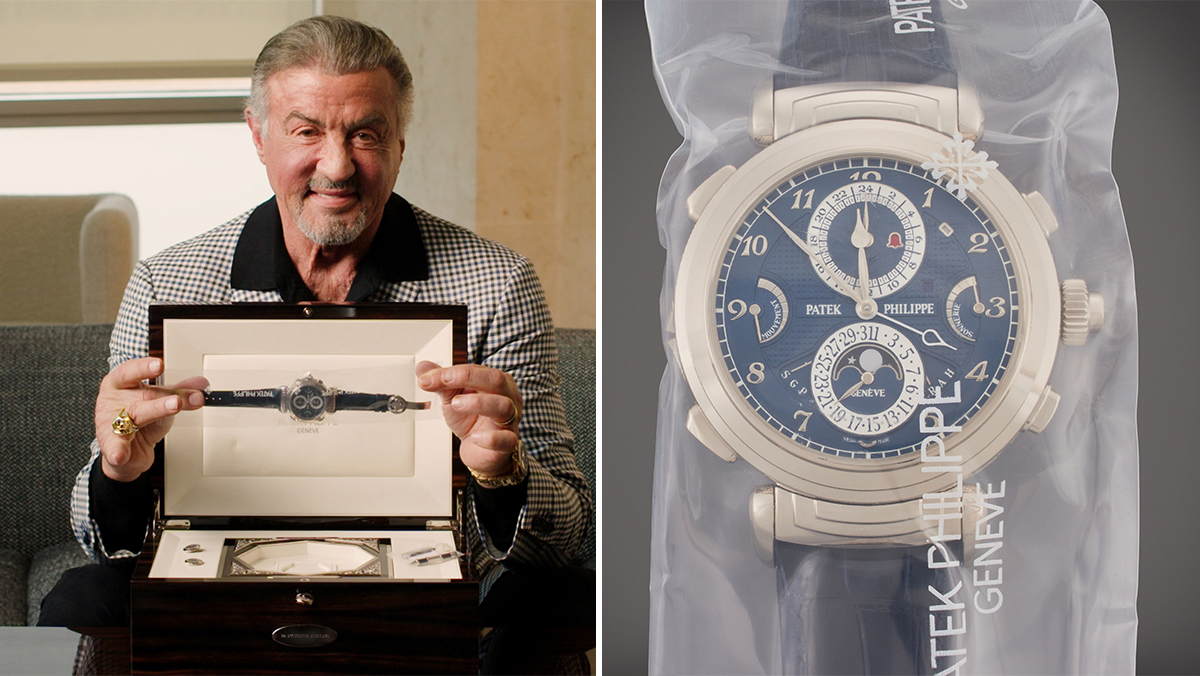
Sotheby’s
“We had not less than eight videos at our auction yesterday, helping to bring our watches to life,” Hess said.
He also referred to Sotheby’s Rough Diamonds auction in April when the auctioneer teamed with the watch magazine Heist-Out to stage a live sale dedicated to avant-garde and overlooked vintage timepieces. The location? A wine cellar in downtown Geneva.
“How fantastic that an entity like Sotheby’s would embrace the notion of bringing 200 people into a cave,” he said. “We can leverage on the down trend in prices to recognise that more than ever before clients want to enjoy the auction experience.”
Meanwhile, Hines is due to begin his role in Hong Kong at the end of June, in time for the opening of Sotheby’s new Maison at Landmark Chater at the end of July, marking the start of an exciting new chapter for the house’s operations in Asia.
“In Hong Kong, the auction business was a seasonal business — spring and fall — and the auction houses would rent the Hong Kong Convention Center for weeklong exhibitions and auctions,” Hines said. “But Sotheby’s is now opening this dedicated space so auctions will take place within the Sotheby’s home. We’ll have flexibility to hold auctions all year round. The space has many floors. There will be a retail space, a gallery space, all really groundbreaking for the Asian business.”
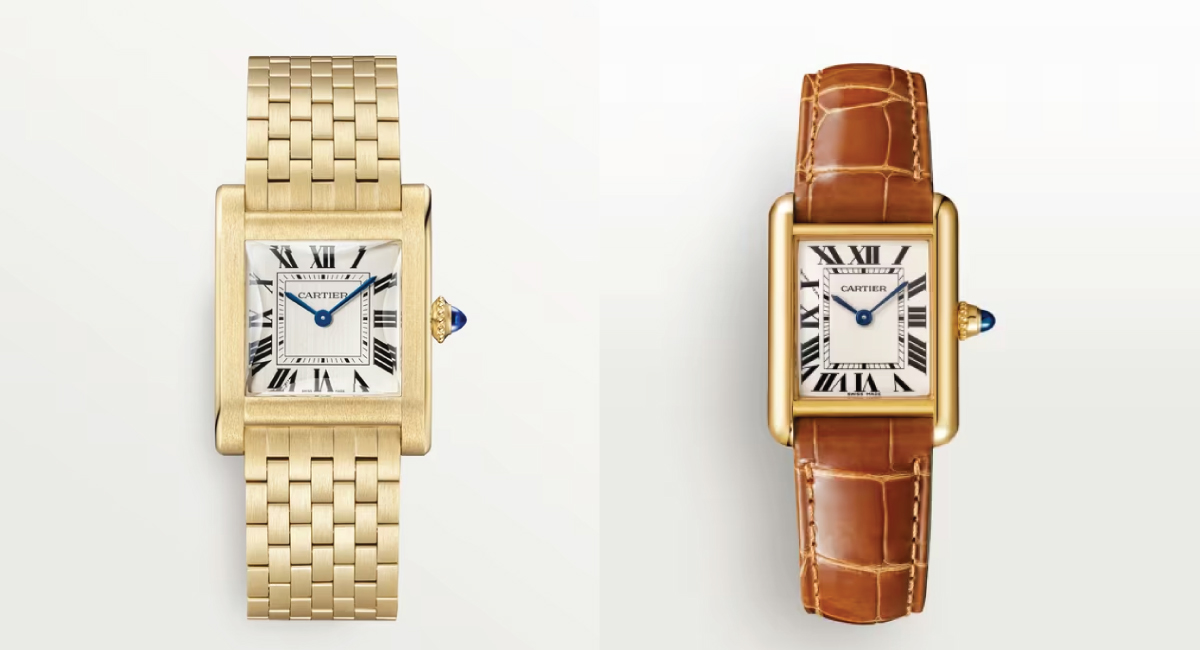
Cartier
Hines said the changes coincide with global shifts in the watch auction world that include the emergence of a new generation of influential Asian collectors.
“Twenty years ago, the Asian market was very small compared to the U.S. or Europe,” Hines said. “But it’s growing at rates where it’s rivaling traditional selling centres. Some of the biggest buyers in the world are in Asia now. So the Asian sales are like what New York was 10 to 15 years ago.”
He also noted new opportunities to deviate from the traditional selling calendar.
“Sotheby’s management globally is looking at why do we have to sell in October and April?” he added. “If an exciting sale could take place in August, why not?”
The sales calendar isn’t the only thing up for revision. In February, Sotheby’s announced a simplified fee structure, which went into effect on May 20. Designed to attract new buyers and sellers, the house now charges buyers a rate of 20 percent (down from 26 percent) on purchases with a hammer value up to USD$6 million and 10 percent of the portion of the hammer price above USD$6 million, applicable to all Sotheby’s auctions globally, excluding cars, real estate, wine and spirits.
Hess said the recent New York Important Watches sale reflected the fruits of the simplified and more accessible pricing. “We had over 1,400 registered bidders yesterday,” he said, noting that the figure represented an increase of 400 registered bidders compared with last June. “That’s a jaw dropping number, meaningfully larger than five years ago. Moreover, more than one-third of our buyers yesterday were new.”
While both Hess and Hines acknowledged the recent downturn in secondary watch prices, they emphasised that it was not a reflection of anyone’s enthusiasm for watches.
“When people ask about the current state of the market, we talk about a meaningful down trend, but the reality is the fun is back in collecting,” Hess said. “I definitely see collectors embracing smaller watches than ever before. It used to be that 36 mm watches suffered a little bit because they were smaller than the 40 mm sport watches that people got excited about. Now there’s less of that. Certain brands will benefit and certain references.
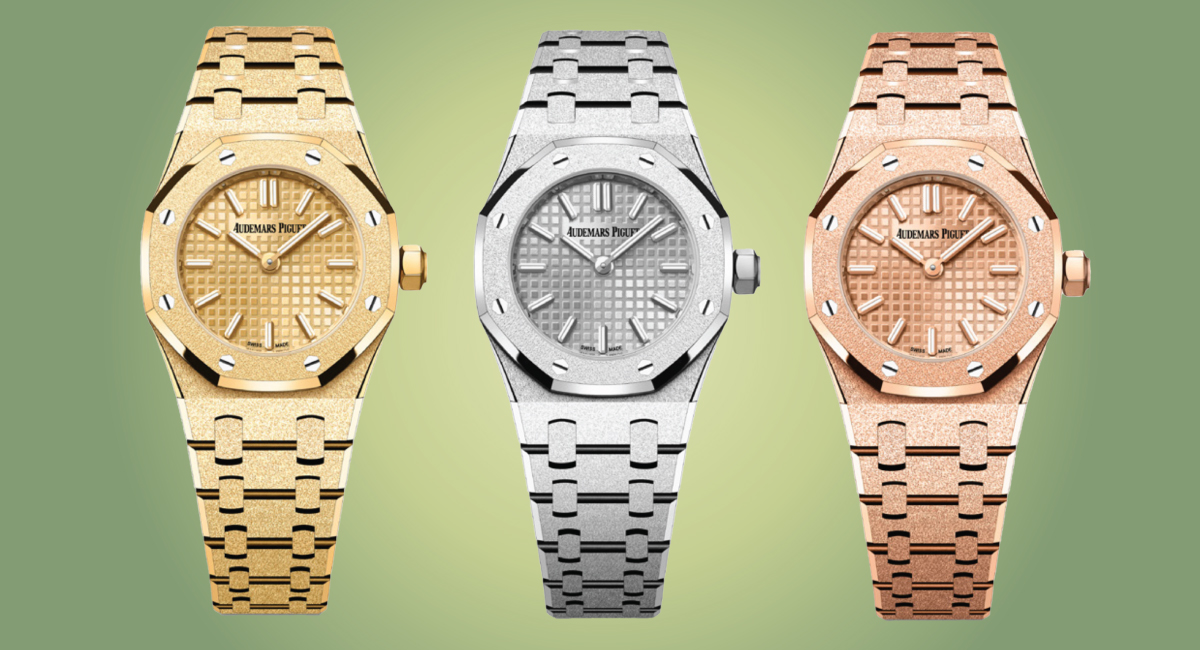
“And you’d have to be living under a rock not to see the uptick in interest in Cartier,” he added. “People are embracing new case shapes and smaller cases and naturally, Cartier would be a perfect fit. The brands are recognizing that, too: AP just came out with their mini Royal Oak yesterday. That’s not a coincidence.
“It’s less about a specific brand that’s hotter than others. It’s about size, shape and also price. That’s the reason why we say the fun is back in collecting. The thrill of the hunt is much more powerful now. Buyers have more choice now than they had recently. That allows you to seek out value buys and that leads to people enjoying the hobby more.”
—






